Part 9 - Alaska, A Journey, not a Destination
Check out the flip side of this blog, Birding Coastal Alaska. Click Here
Birding Interior Alaska and More
It would be easy to say that we birded Alaska, North to South and East to West, but that would not be entirely accurate. North, yes, you can’t go further north than Barrow. South, yes, we made it down to Juneau. There is further south although habitat wise, no reason to do it. East, yes, we arrived on the Alaskan Highway and exited on the Top of the World Highway. West, not even close. We did not go to Nome or any part of the Aleutian chain. The west will be on the top of the list for our next Alaska adventure which is penciled in for 2027.
Glacier Education
Let’s talk first about glaciers and then I will discuss birding interior Alaska at my favorite locations.
You can’t spend 6 weeks in Alaska and not learn a little about glaciers. They are everywhere. Depending on your source there are between 25,000 and 100,000 glaciers in Alaska. Hardly any of them are named.
The Demise of Glaciers?
You cannot talk about glaciers without mentioning climate change. This would include both geological climate change (yes, we are coming out of an ice age) and the more recent inflection since the world entered the industrial age. Yes, let’s call it human-induced climate change. The changing climate has an impact on the glaciers; however, it is not all doom and gloom. Many glaciers are thriving and not just the ones at higher elevations and latitudes.
For example, the Mears Glacier near Valdez regenerates each winter more than it calves (falls off at the end) each summer. This means that it is advancing down the valley and into the ocean. We witnessed the destruction of large trees along the path of this glacier as proof of a healthy advancing glacier. On the other hand, the Worthington Glacier, close-by, is receding. Why two glaciers, within 50 miles of each other, are performing so differently is a mystery to me. Perhaps micro climate is the culprit.
An Iceberg is not Always an Iceberg
A calving tidewater glacier drops varying sizes of floating ice in the water. In man’s never-ending desire to categorize things, we do the same with floating ice. Not all floating chunks are icebergs. To be an iceberg, it must protrude 5 meters above the water’s surface. If it protrudes 1 to 5 meters above the water’s surface it is a bergy bit. Less than 1 meter and it is a Growler. Why growler? Because they were often overlooked in navigation and when they scraped down the side of wooden planked ships, they made a growling sound.
Moraines
What are moraines? Imagine taking a stick, one inch in diameter, and slowly dragging it through some sand. When you stop dragging and lift the stick you will see ridges along the side of where you were dragging the stick and a ridge in front where you lifted the stick. This is what the massive sheet of ice, called a glacier, does as it grinds its way down a valley. The ridges along the side of its path are lateral moraines. Glaciers that are in a seasonal cycle of advance and retreat can make a big pile in front called a terminal moraine.
Do you know what is the largest terminal moraine in North America? A little piece of real estate called Long Island, New York. That must have been a very large glacier.
Glacial Rebound is not What Shaq Did
In my last blog post, I mentioned the term Glacial Rebound. Now I will explain it. The last global glacial maximum was about 30,000 years ago. There was also a regional mini-ice age in coastal Alaska from about 500 to 250 years ago. The unimaginable weight of glaciers and ice sheets that, in some cases, were over 2 km thick compacted the ground beneath them and actually deformed the earth’s crust. After the ice sheets and glaciers melted or receded the dent in the crust recovered and the soil began to uncompact. The movement is significant and can still be inches per year hundreds of years after the ice is gone. Dyea’s harbor became shallower and shallower from rebound even after human habitation preventing the modern ships of the 19th century from accessing this town. Instead, they favored the deep-water port of Skagway across the bay and the rest is history. A ghost town on one side and a thriving community on the other all because of glacial rebound.
Finland is a great example of ongoing and significant glacial rebound. Finland is gaining surface area at about 7 km2 per year. The land is rebounding 2 cm per year.
Birding Interior Alaska
There are many different species of passerine birds that show up in Alaska from Asia every summer. A few of those are visitors that you can count on every summer. Only two of those birds can be found when birding interior Alaska. Those two birds are the Northern Wheatear and the Arctic Warbler.
Arctic Warbler
Let’s first talk about the Arctic Warbler. The Arctic Warbler was an important bird for me to find. No, it would not be a lifer, as I had seen this bird in the Dong Nai province of southern Vietnam. I was excited to see this bird after such a long trip from Vietnam. A long trip for both the bird and me.
The Arctic Warbler is a member of the Leaf-Warbler family of birds, phylloscopidae. This is a family of eighty species of birds that range across Europe, Africa and Asia. Most species of leaf-warblers look very similar and are difficult to identify in the field when there are different species overlapping. A photo and/or recording is required to make out the subtle ID field marks and vocal differences. Check out this photo from my Birds of Southeast Asia book. Arctic Warbler is #10.
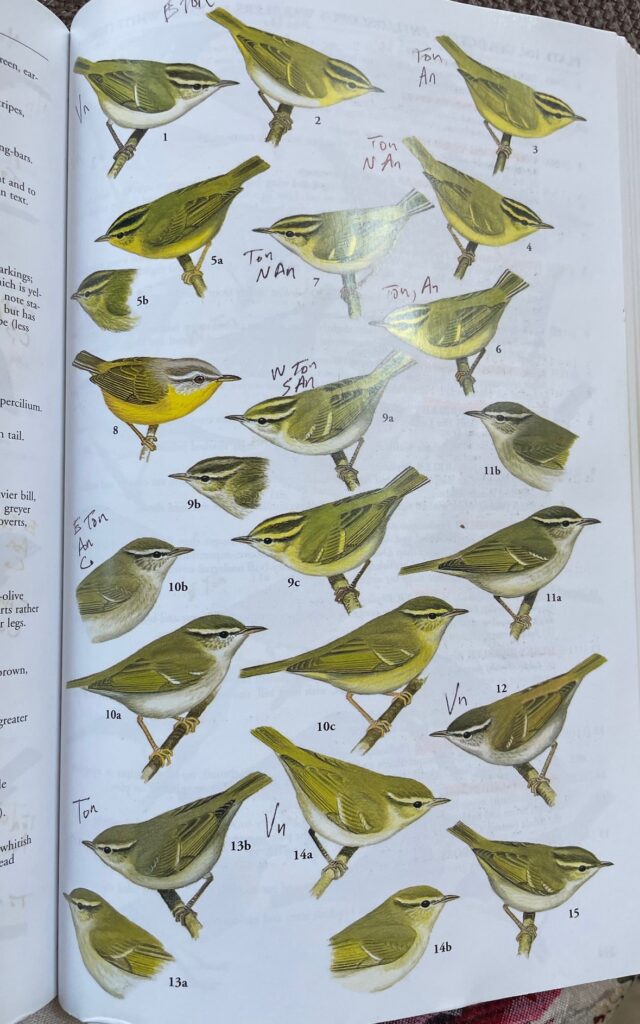
Denali Highway, the Best of Birding Interior Alaska
The place to find the Arctic Warbler was along the Denali Highway. The Denali Highway is a 135-mile gem of a gravel road between Paxton and Cantwell. It is largely above the tree line with a few areas of low scrub habitat. There is a backdrop of majestic snow and glacier covered mountains. Rivers and hundreds of ponds and lakes add to the diversity of sight along the way. There are campgrounds, a couple of lodges and many boondocking sites. We spent several days in this area.
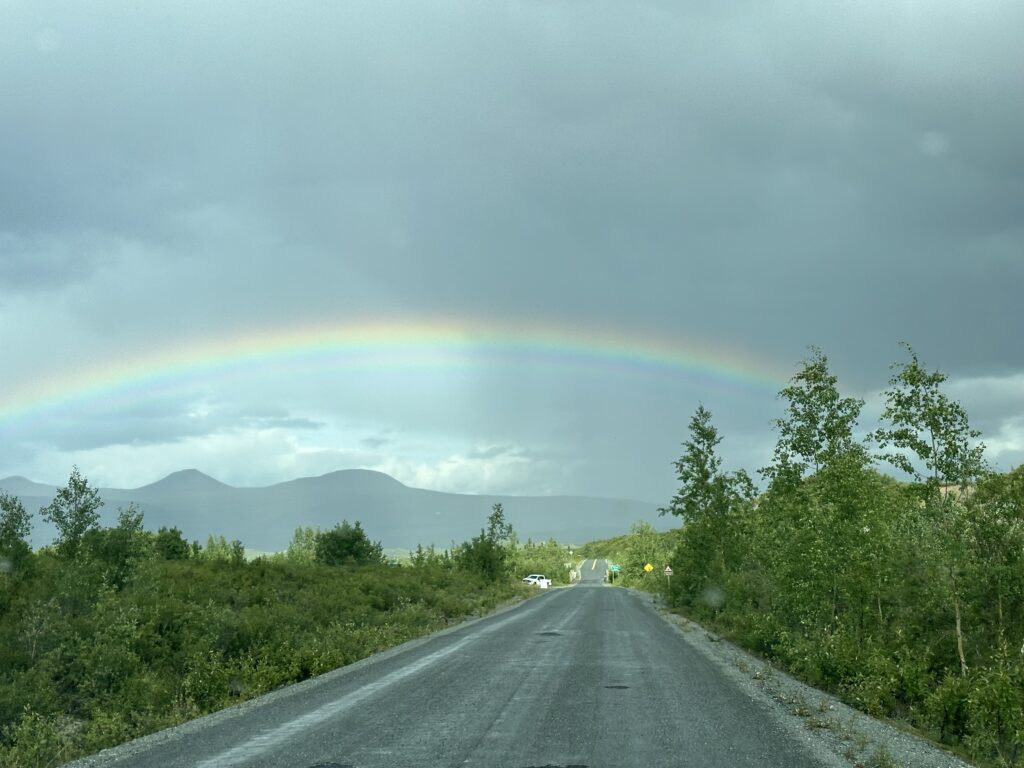

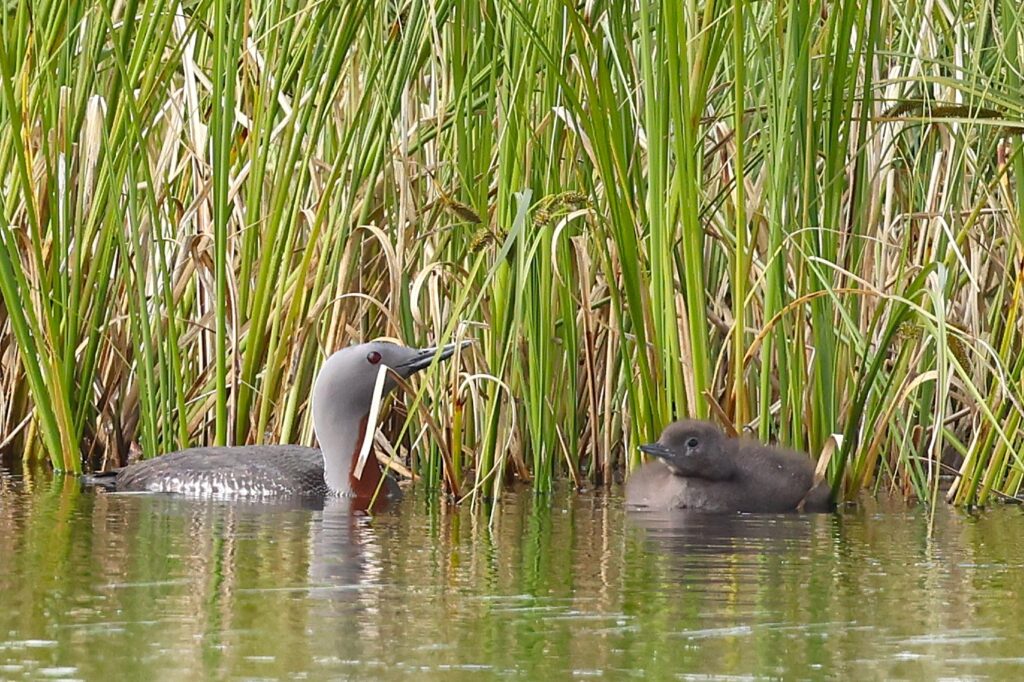

A key feature of the highway are two lateral moraines from an ancient gigantic glacier about half way through the highway. It is called the Crazy Notch, and it is a snow trap that catches drifting snow making it impossible to keep the road clear in the winter.
Maclaren River
We stopped at the Maclaren River bridge and parked for lunch. After filling up on my usual ham sandwich followed by cottage cheese and frozen cherries for dessert, I decided to go look for birds, specifically the Arctic Warbler. It did not take long for one to appear and approach close enough for some good photos. It was a Top 5 birding moment on the trip.
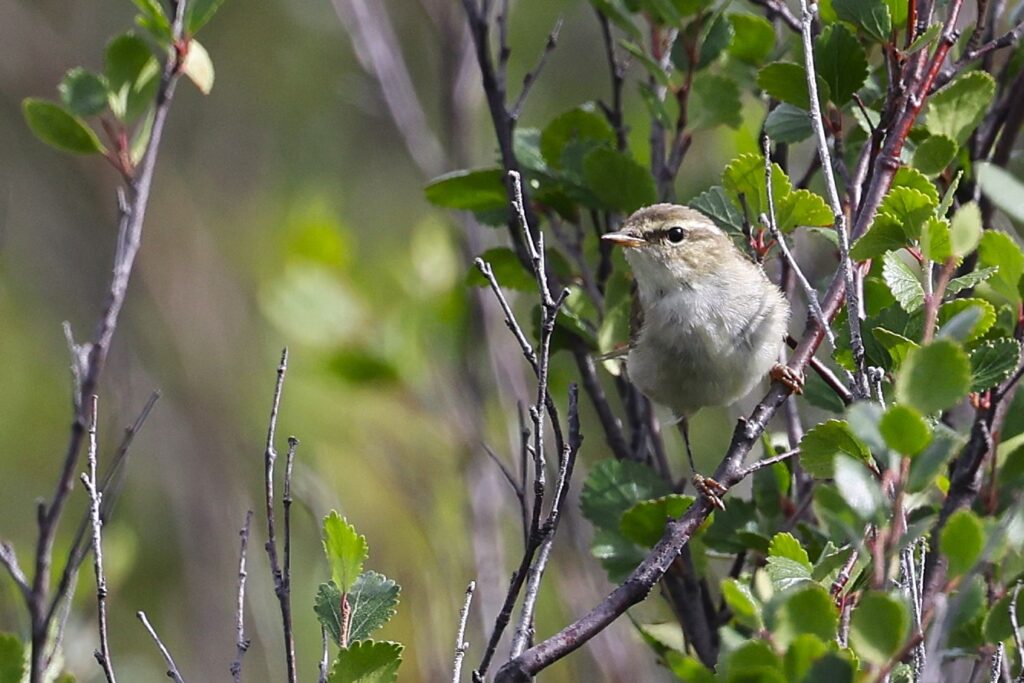
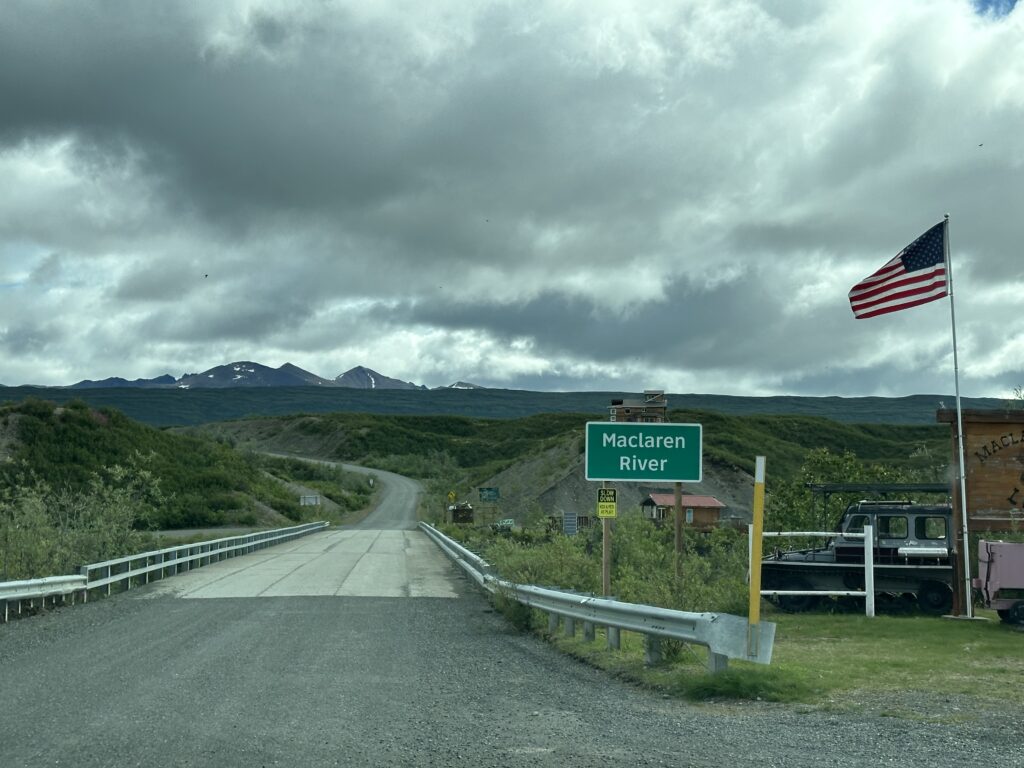
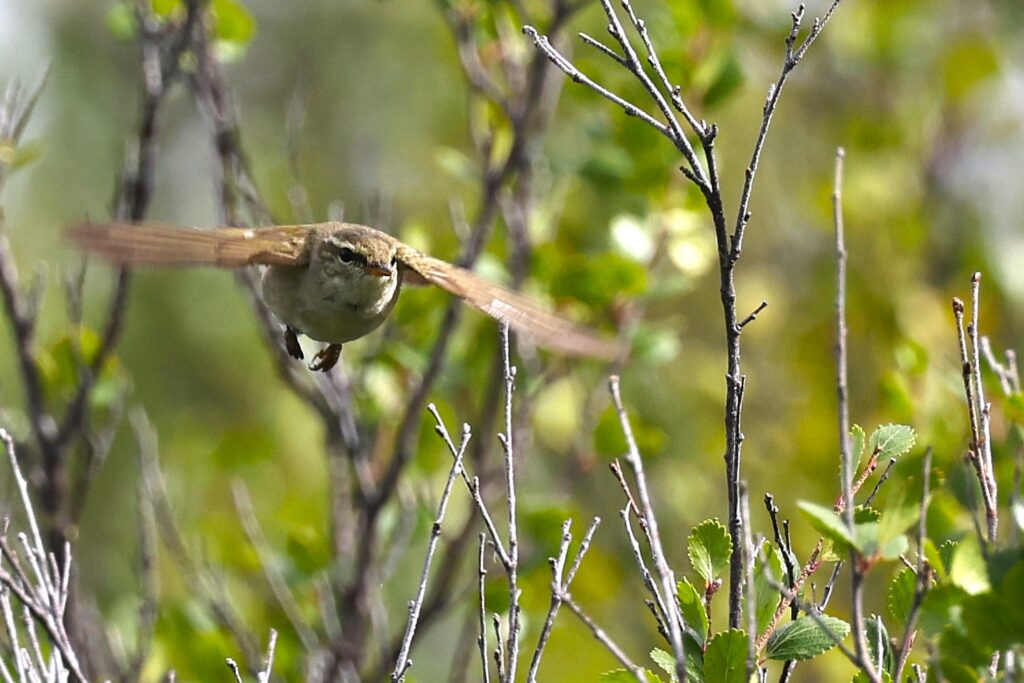
Tangle Lakes
We camped at Tangle Lakes BLM camping area for three nights. From this base we explored the area. Many additional Arctic Warblers were found along the stream areas. They were nesting and the chicks were just starting to fledge. The Wilson Warblers and Orange-crowned Warblers were also in abundance and beginning to fledge.
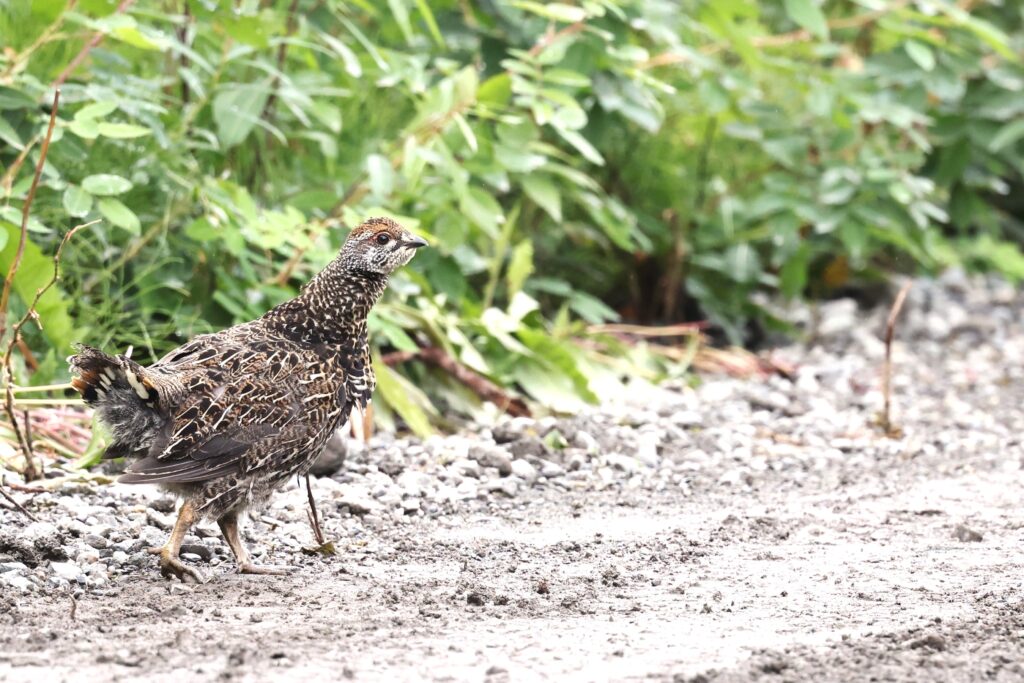
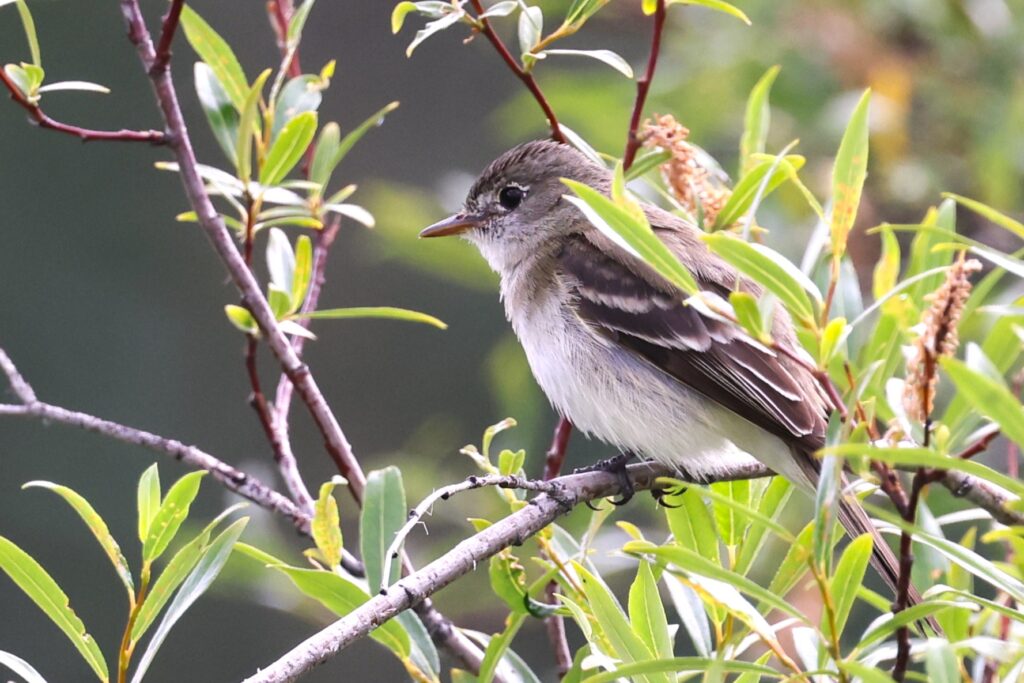
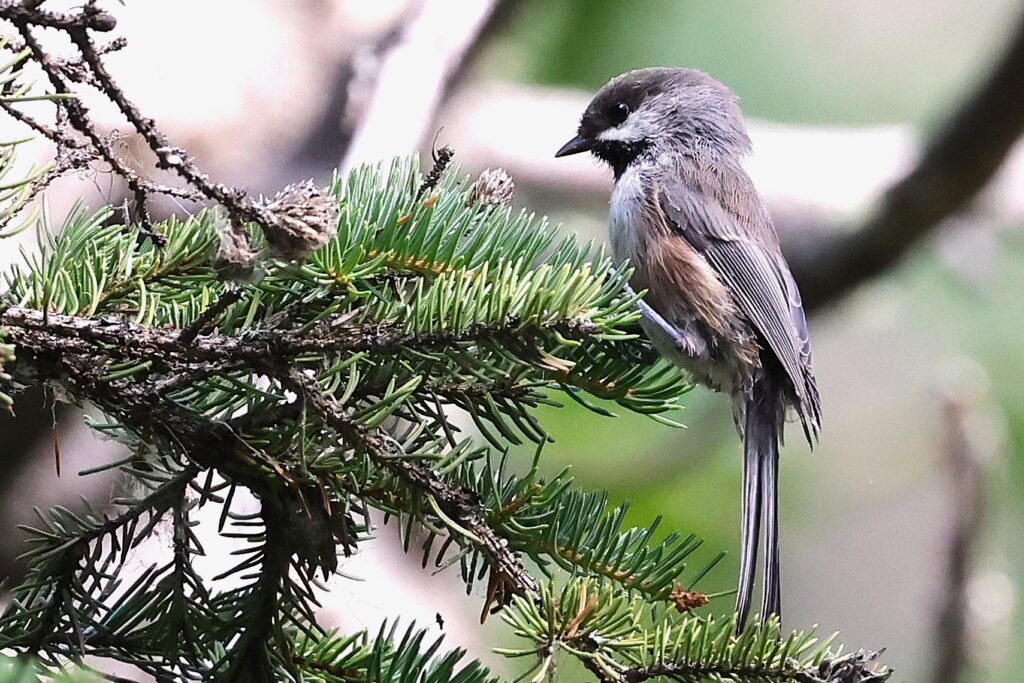
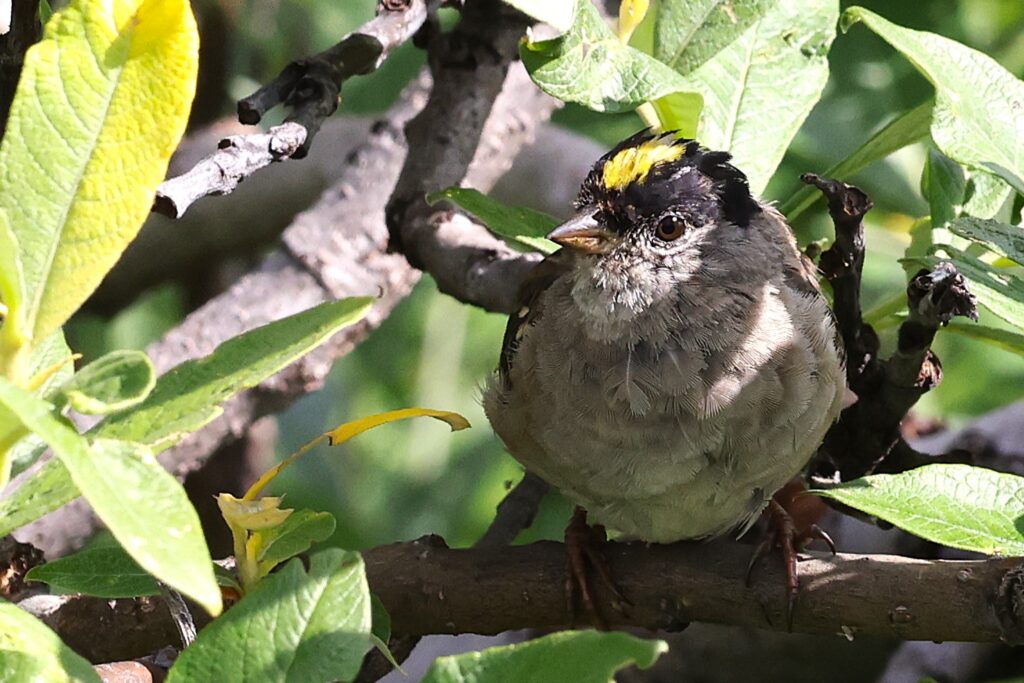
There was a pair of American Dippers gathering food and carrying it back to their nest under a bridge. They did not seem too worried about me. I cannot get enough of these cool birds.
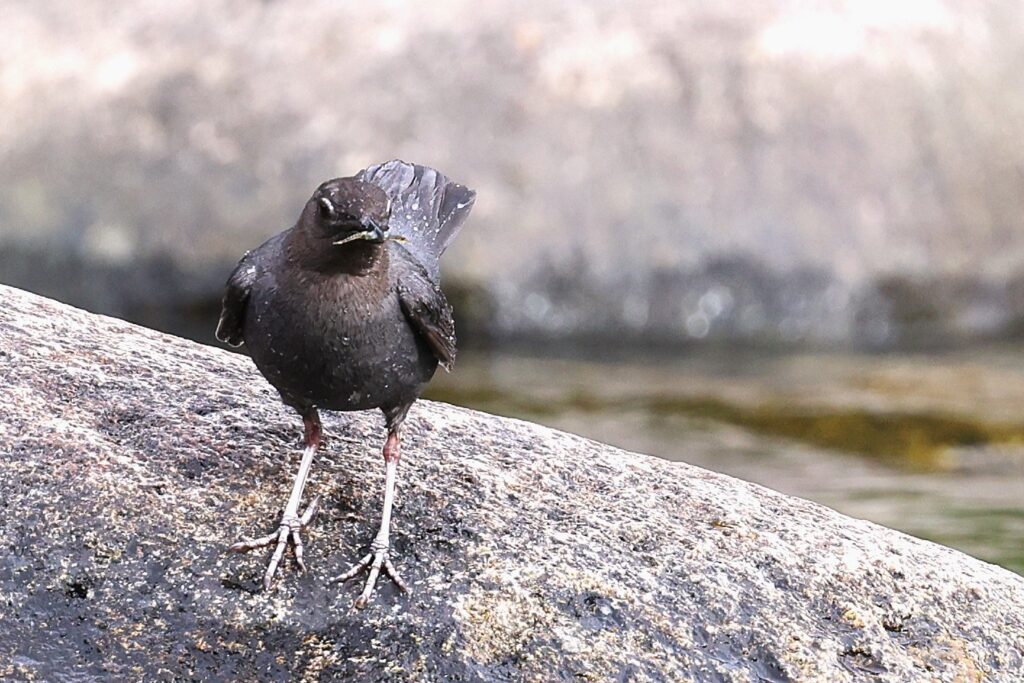
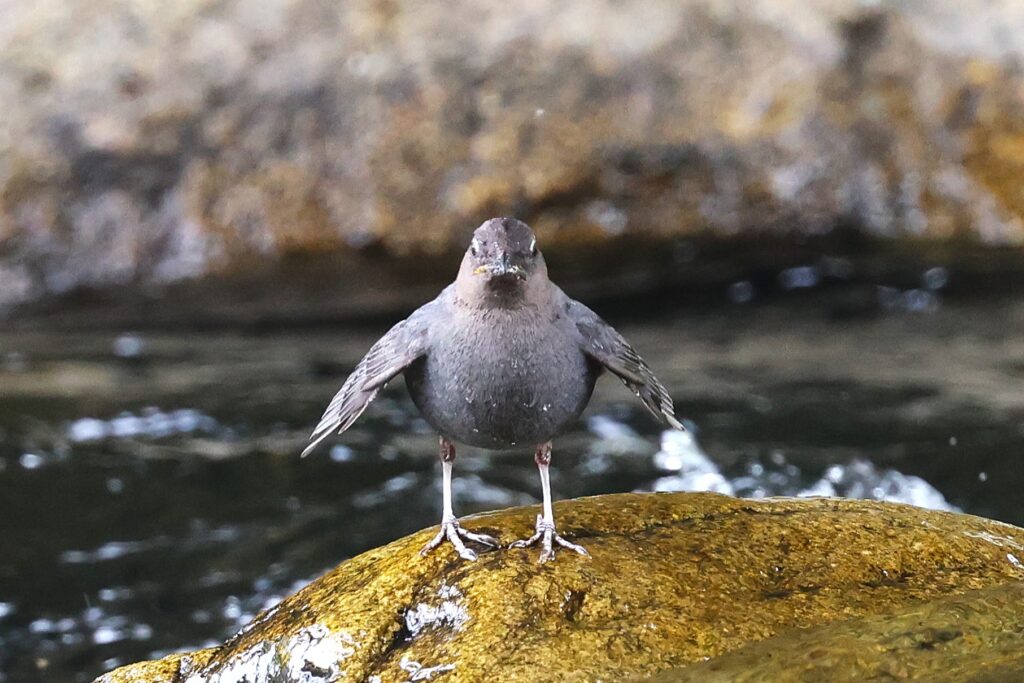
Maclaren Summit Trail
One morning we took a long hike on the Maclaren Summit Trail. This trail wanders through tundra and shallow lakes with great views of glaciers and mountains on the horizon. Here I witnessed two American Golden Plover males in full breeding plumage declaring their territory to each other from atop their home stones. I also saw my first Smith’s Longspurs outside of Oklahoma.
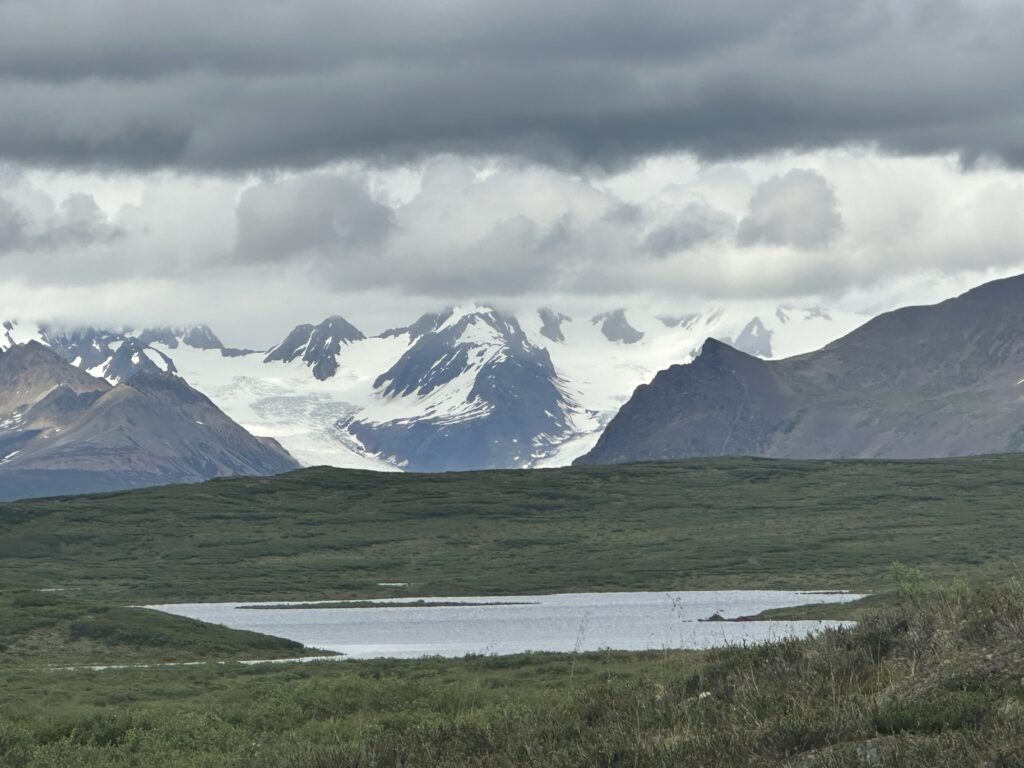
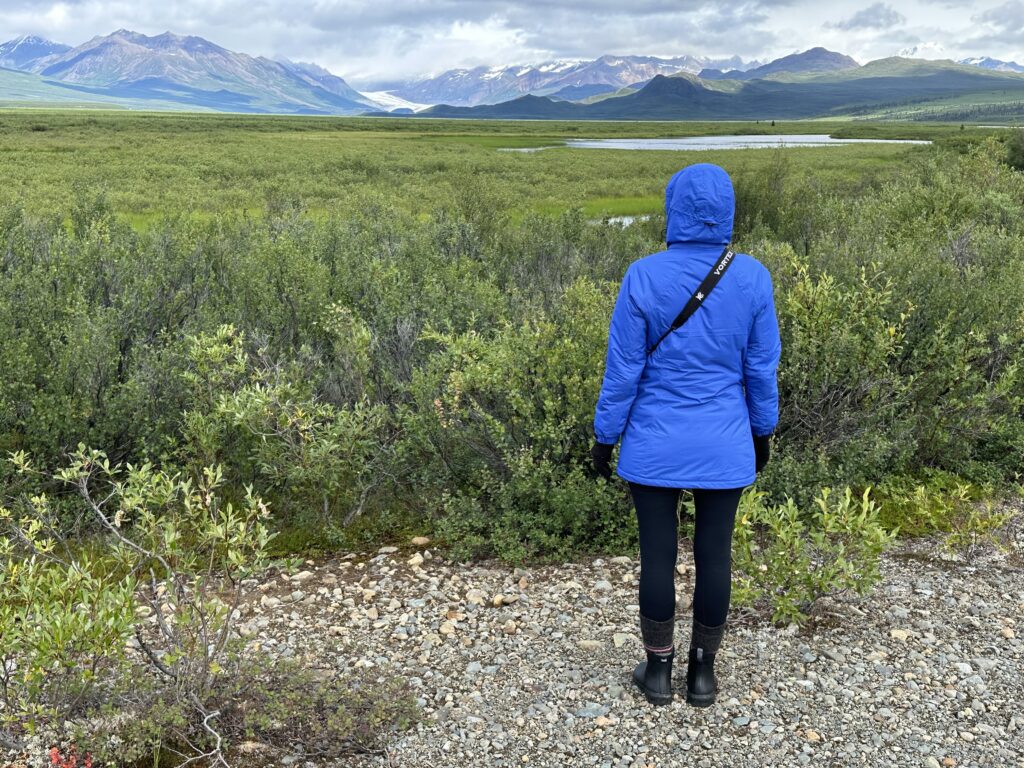
Tangle Lake Connecting Streams
On another morning, I walked alone up the banks of a briskly flowing clear water stream. Keeping my wits about me, knowing this was prime bear habitat, I made plenty of noise as I walked. The “nuclear option” was on my hip. I was rewarded twice along the way. First with a female Barrow’s Goldeneye foraging in the rapid water and second, a little farther upstream, got my best looks ever of a female Harlequin Duck. As a child, I always thought ducks like calm lakes and ponds. As a birder, I have learned that some ducks prefer the rapid flow of clear water streams.
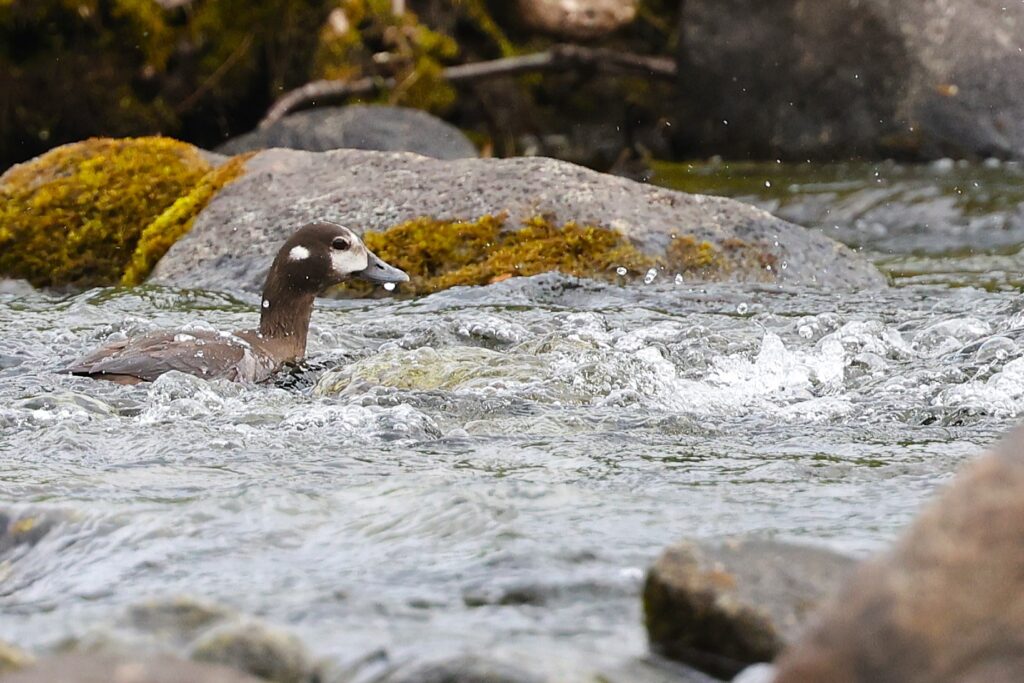
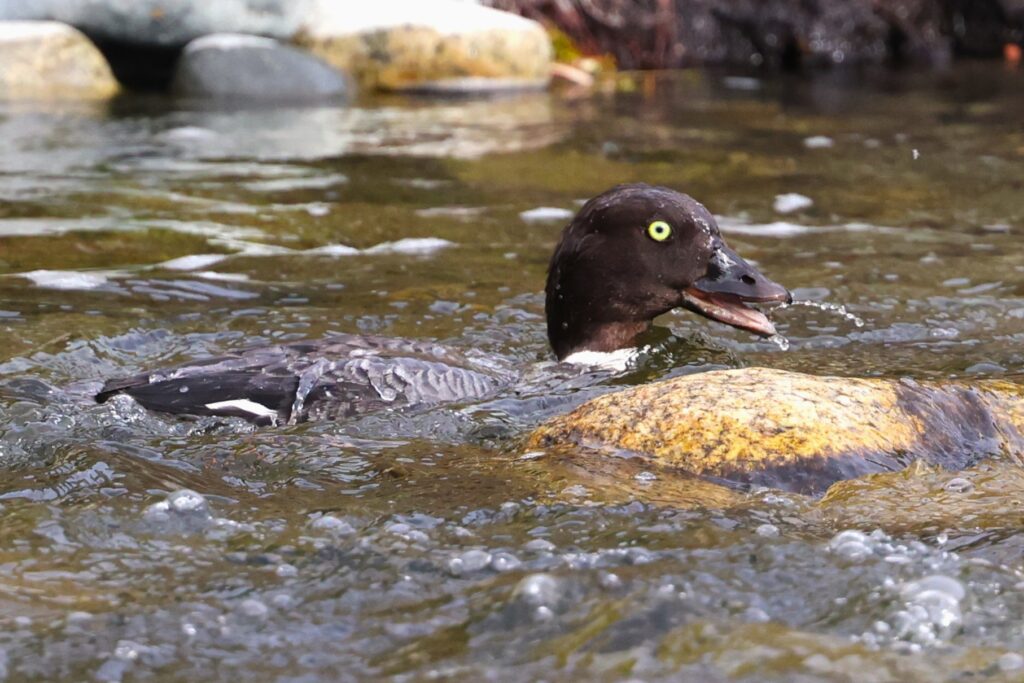
Denali National Park
We spent two days in Denali National Park. Mostly in search of the Northern Wheatear. Despite recent reports on the Savage Alpine Trail of Northern Wheatears, I could not find any, but the effort was there. It was a strenuous 6-mile loop highlighted by a pair of Golden Eagles soaring overhead. We hiked the Savage River Trail and a few other short hikes which yielded my best looks at American Tree Sparrow, Willow Ptarmigan and Redpoll. In 2024 Common Redpoll and Hoary Redpoll were lumped into one species, Redpoll.




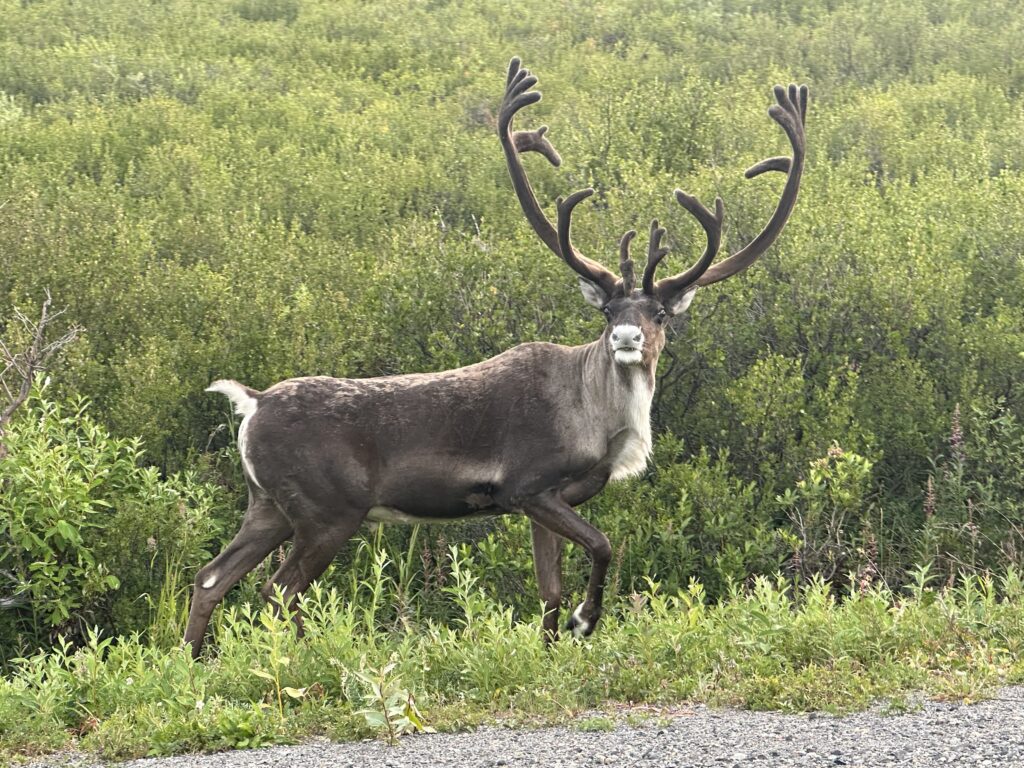
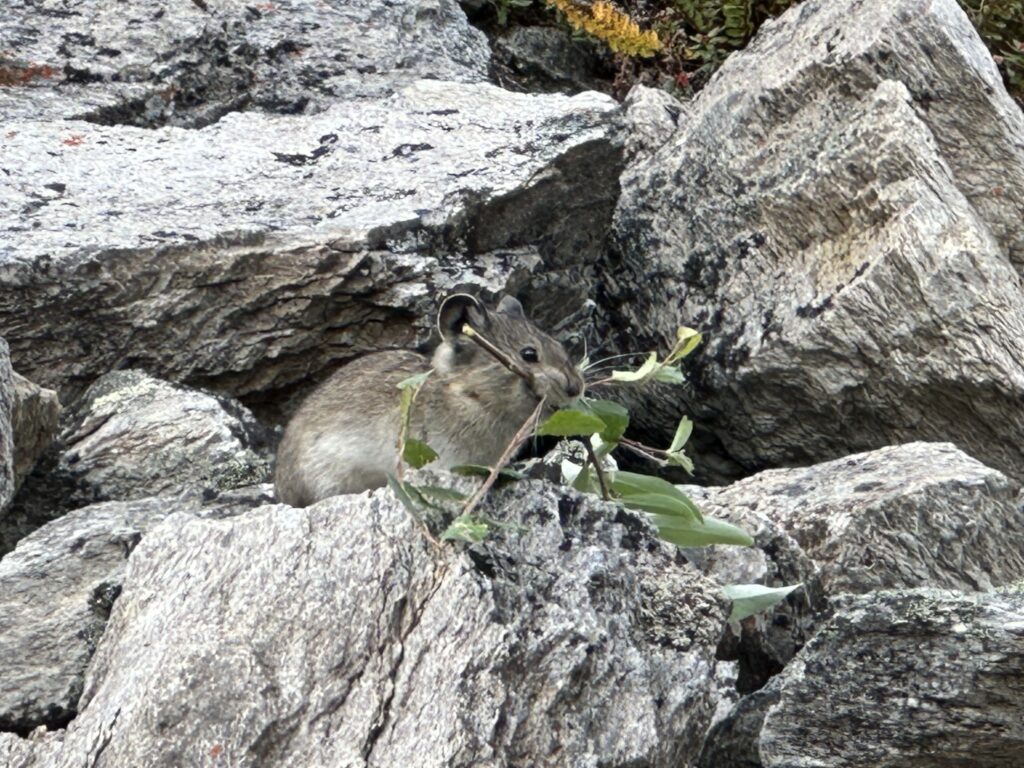
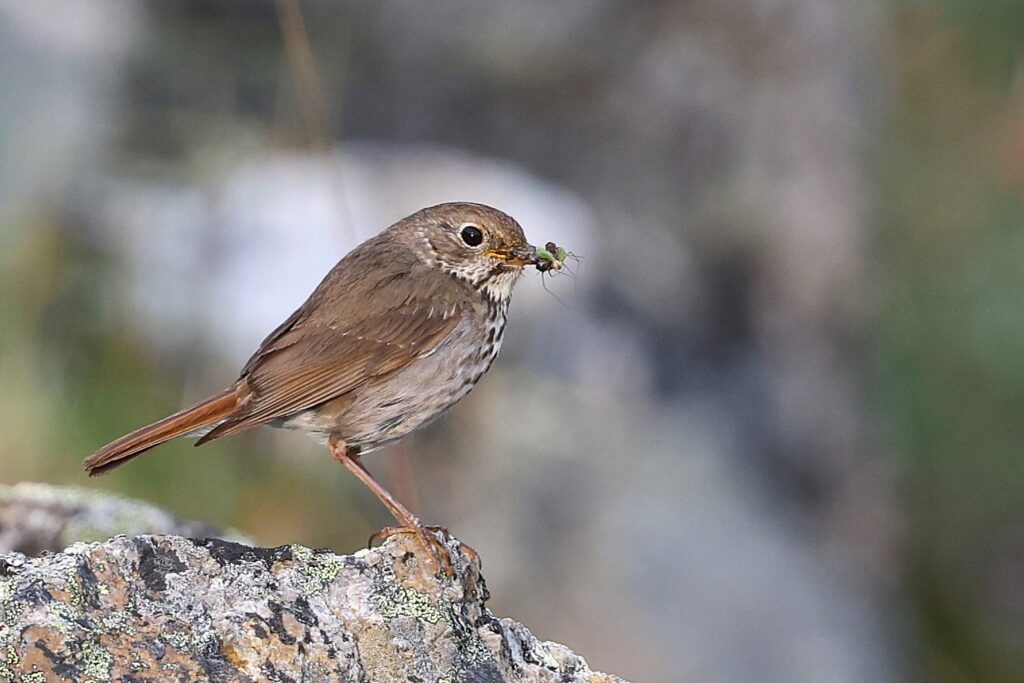
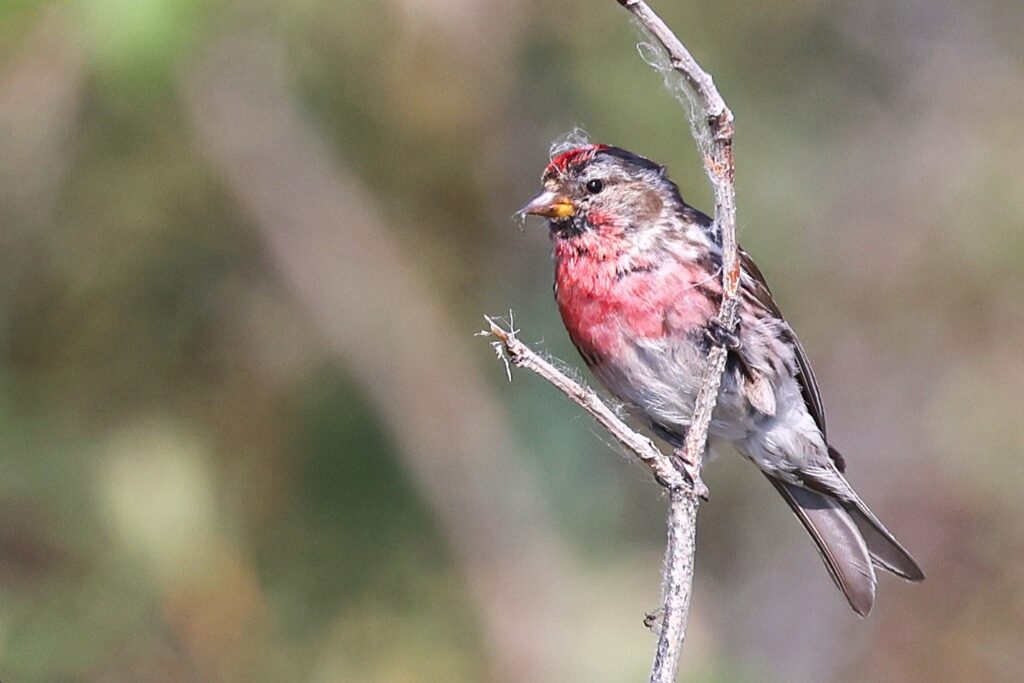
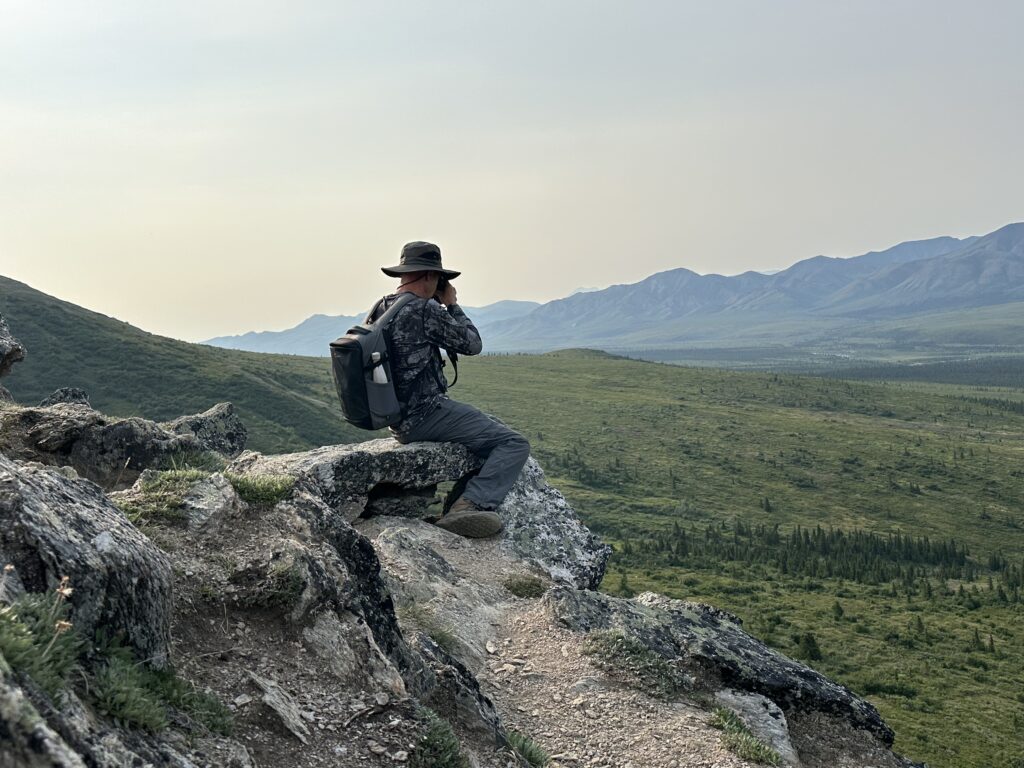
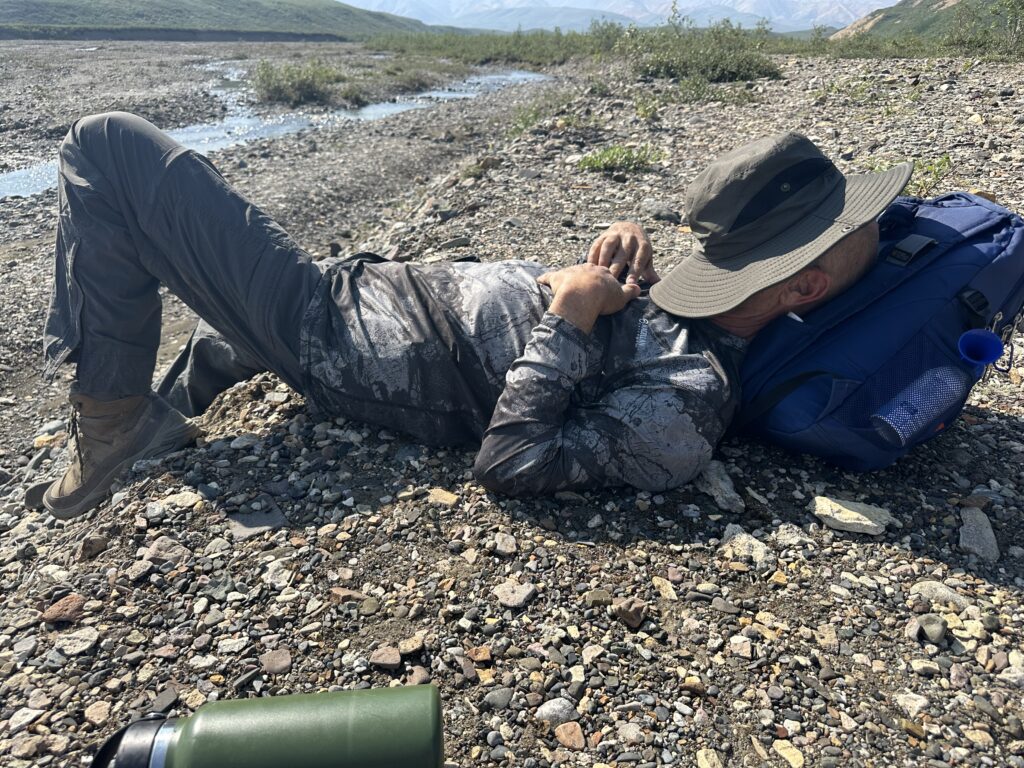
The Heart of Birding Interior Alaska
We spend many days around the Fairbanks area. One such stop we made was at the Tetlin NWR at the Lakeview Campground. It was at this spot that I saw my first Bohemian Waxwing. They proved to be not nearly as cooperative as the Cedar Waxwings that forage every winter around my Oklahoma house. I also had my best looks at Rusty Blackbirds. Most spectacular at this location were the numerous groups of Horned Grebes with their chicks playing around and riding on mommy’s back along the reed bed edges. We sat and watched these at close range for some time. I had a hard time deciphering the best photos.
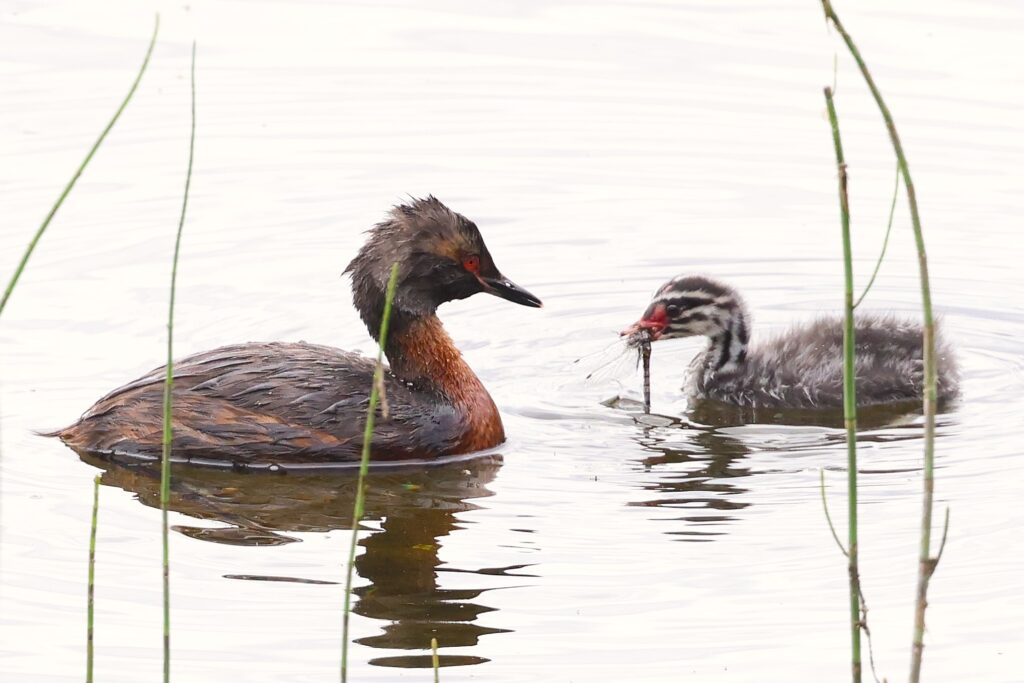
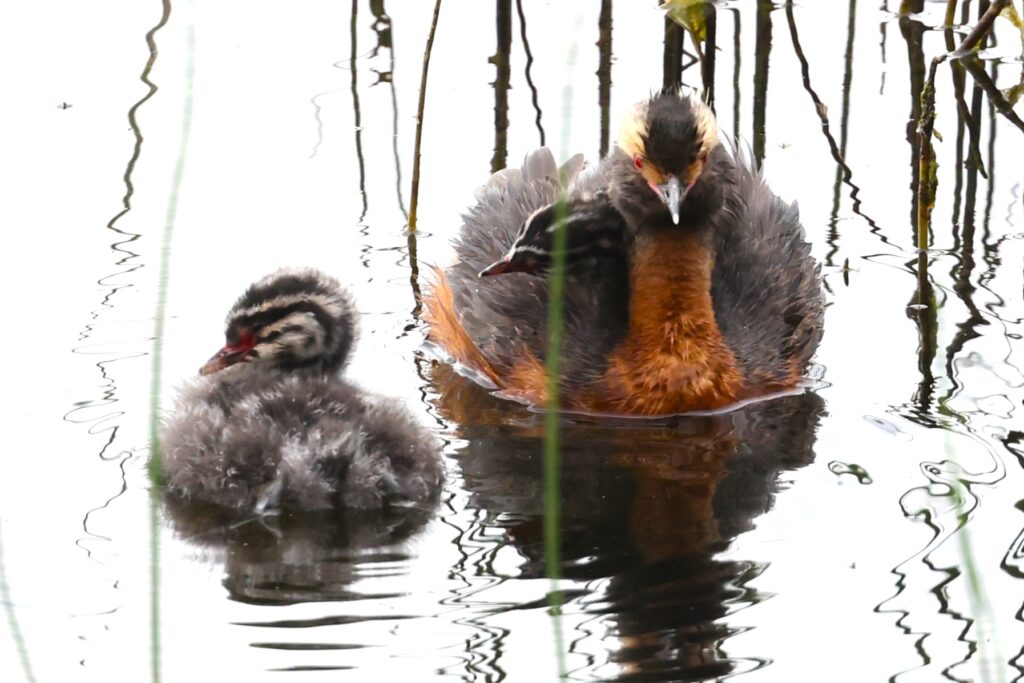
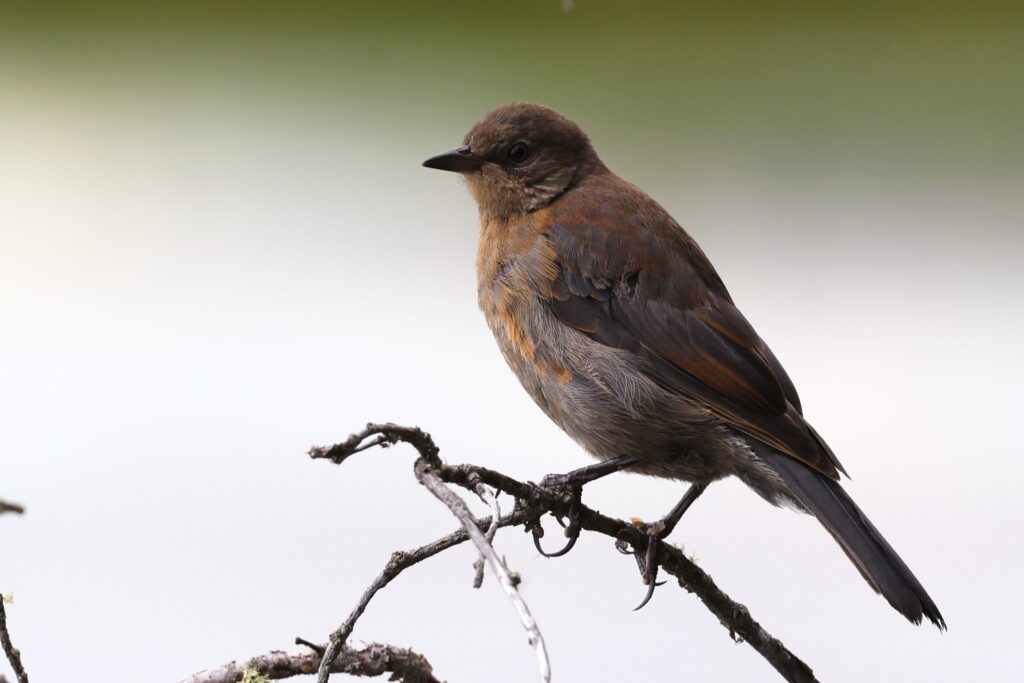
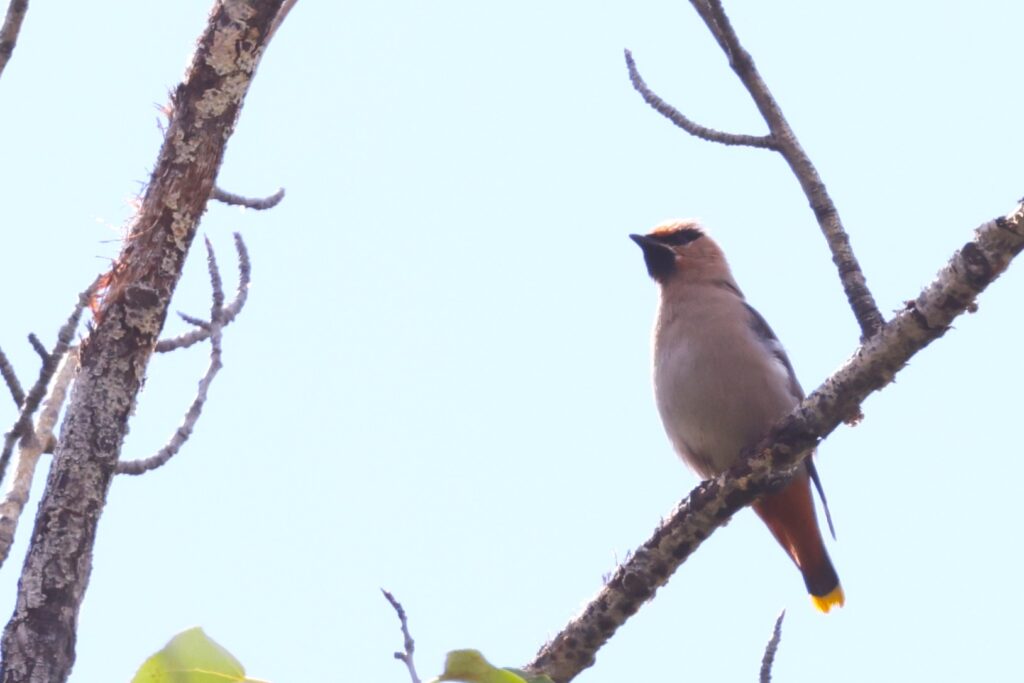
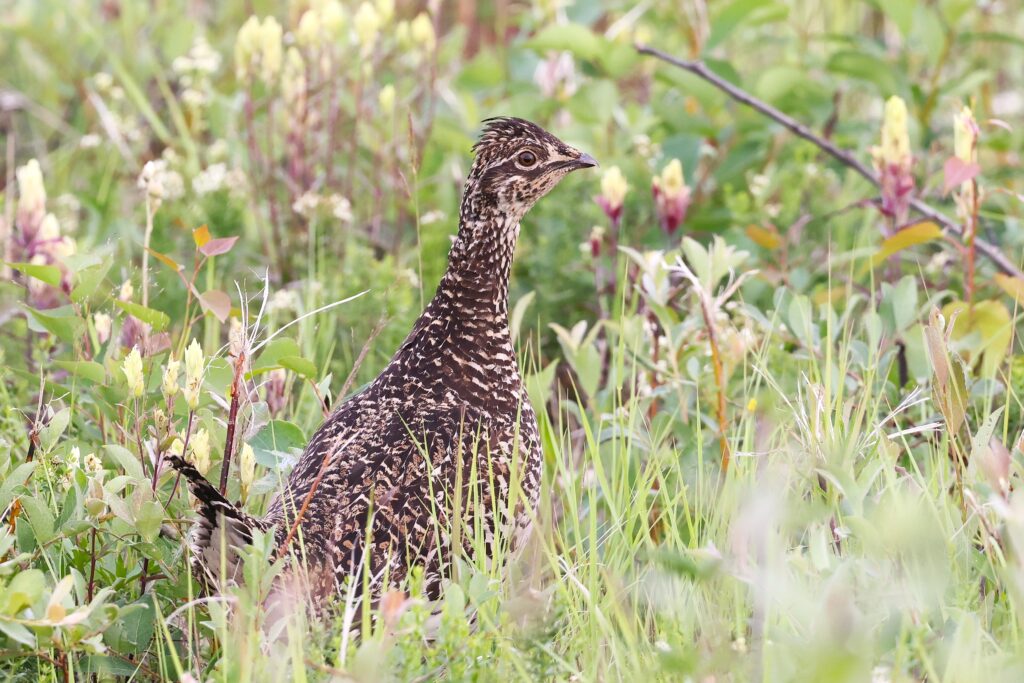
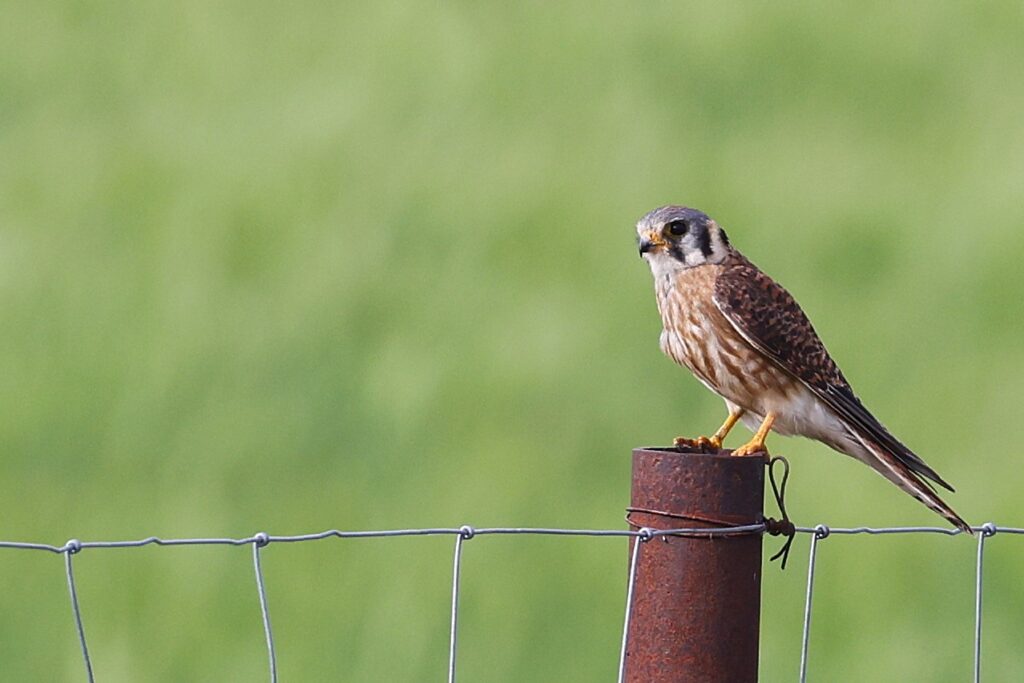
Sadly, we witnessed one mother grebe with several babies stray too far from the reed bed and come under the attack of a couple of large gulls. Despite the valiant effort of the mother to rise to fight off the gulls and the chicks’ instinct to dive under water or nuzzle up to their mother, the chicks got picked off, one by one. Natural selection at work, without a doubt.
In Fairbanks, you will find Creamer’s Field MWR. It is known for its annual concentration of non-breeding Sandhill Cranes. Hundreds of them. These are birds that either lost their mate (hunting them is legal in many states) or simply failed to attract one. It’s a summer long bachelor party. There are also some great walking trails through some mosquito infested, forested habitat.
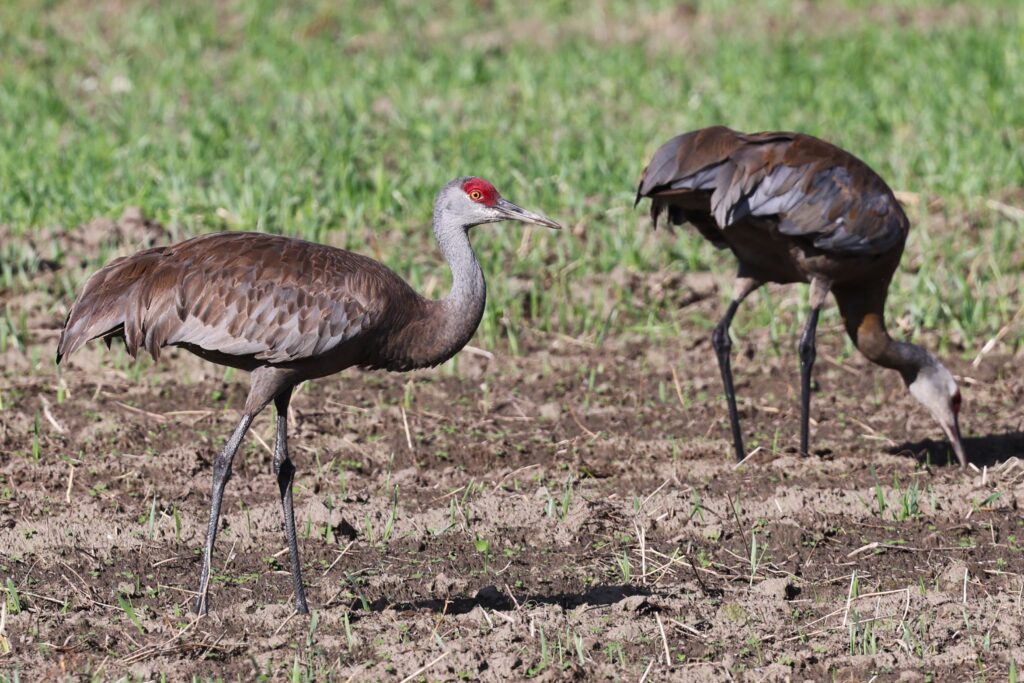
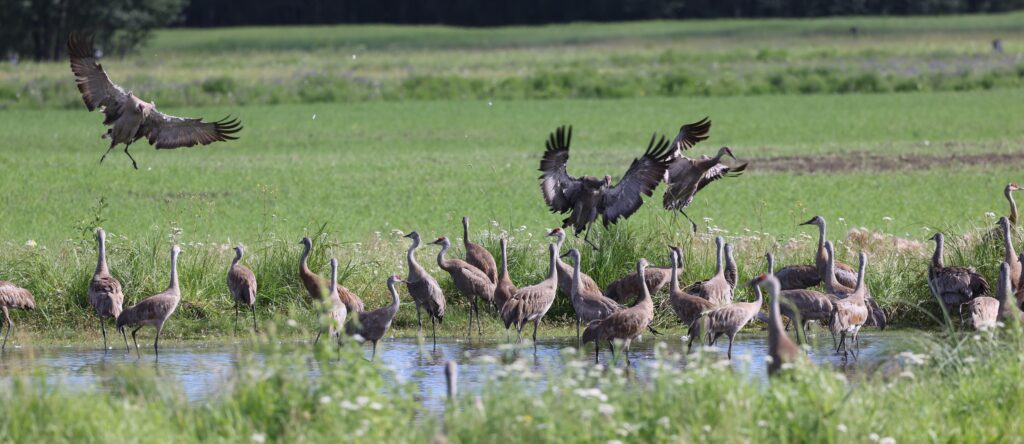
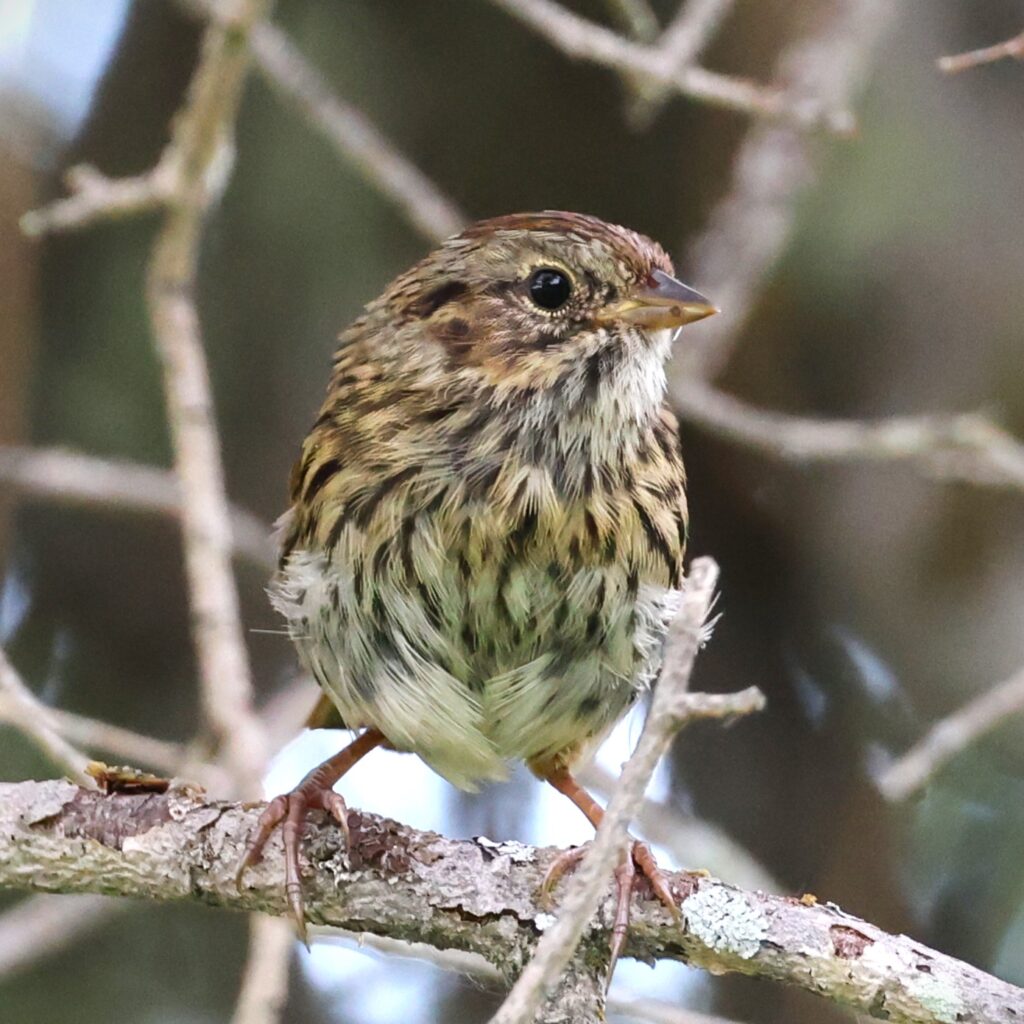
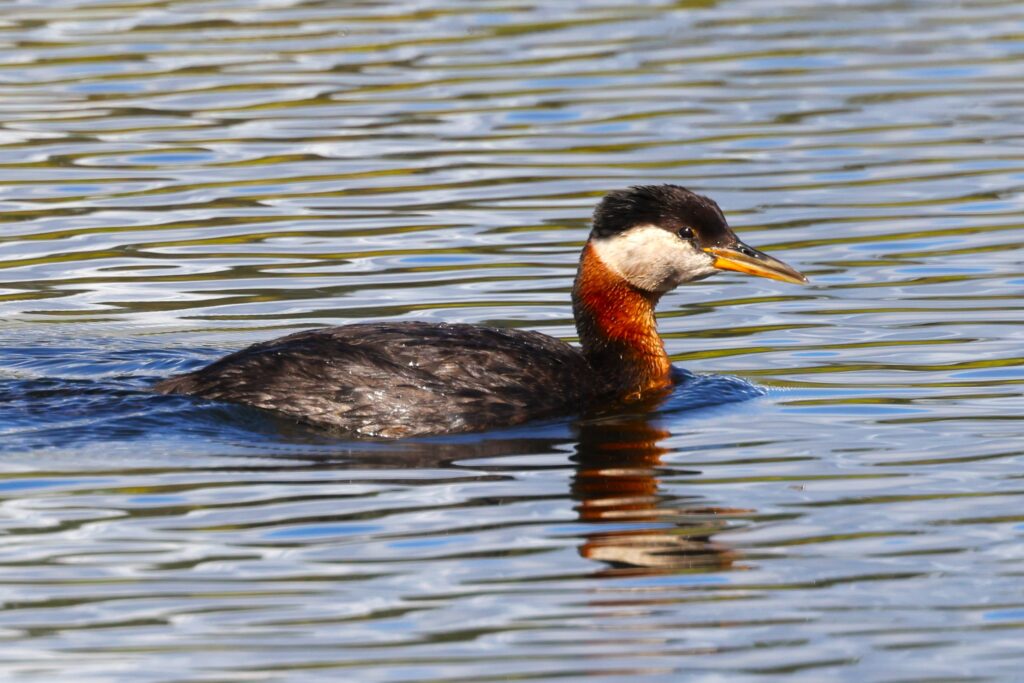
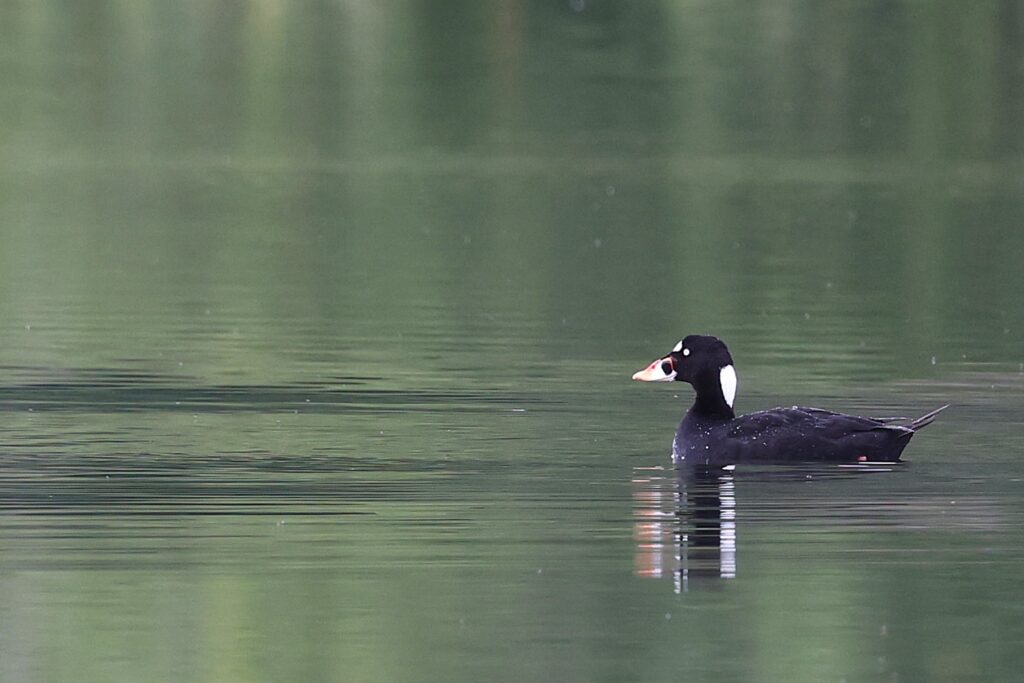
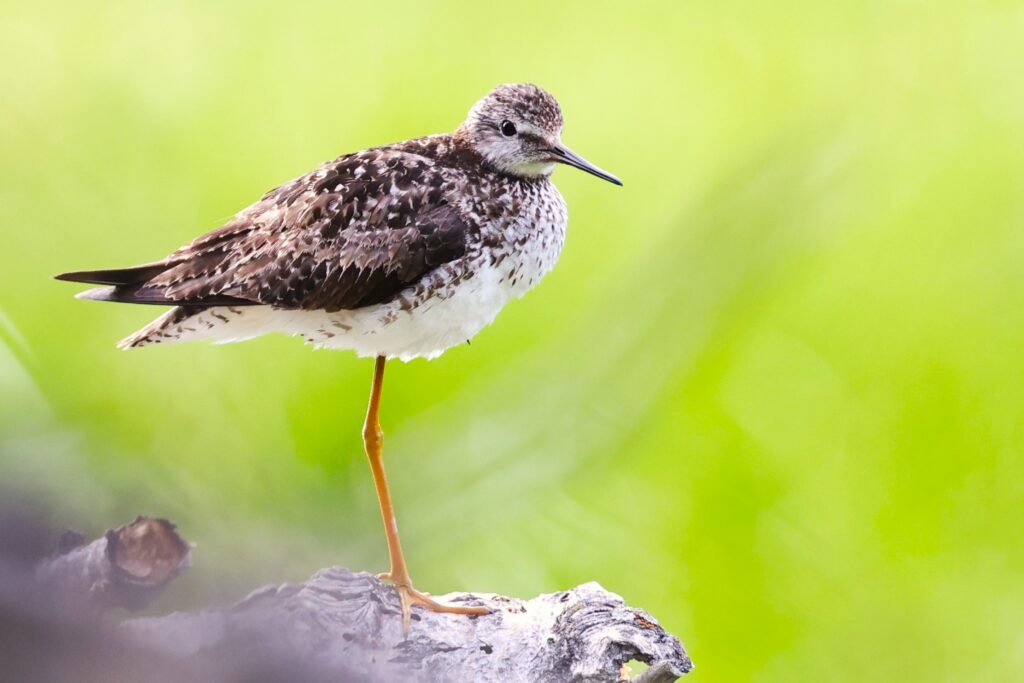
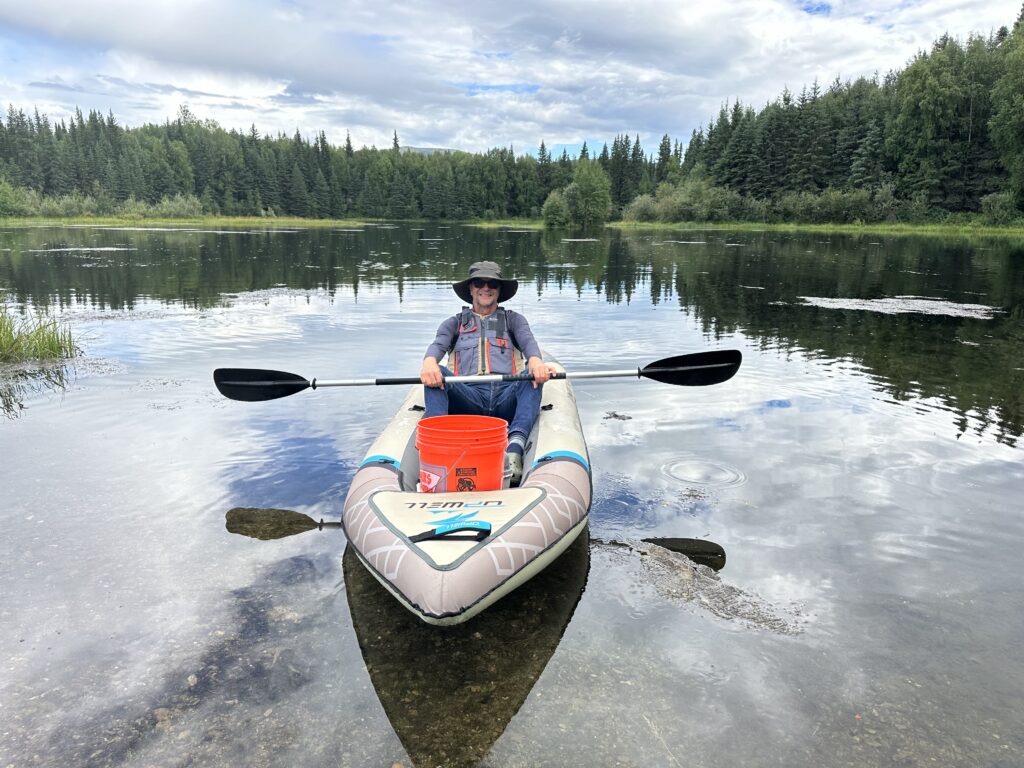
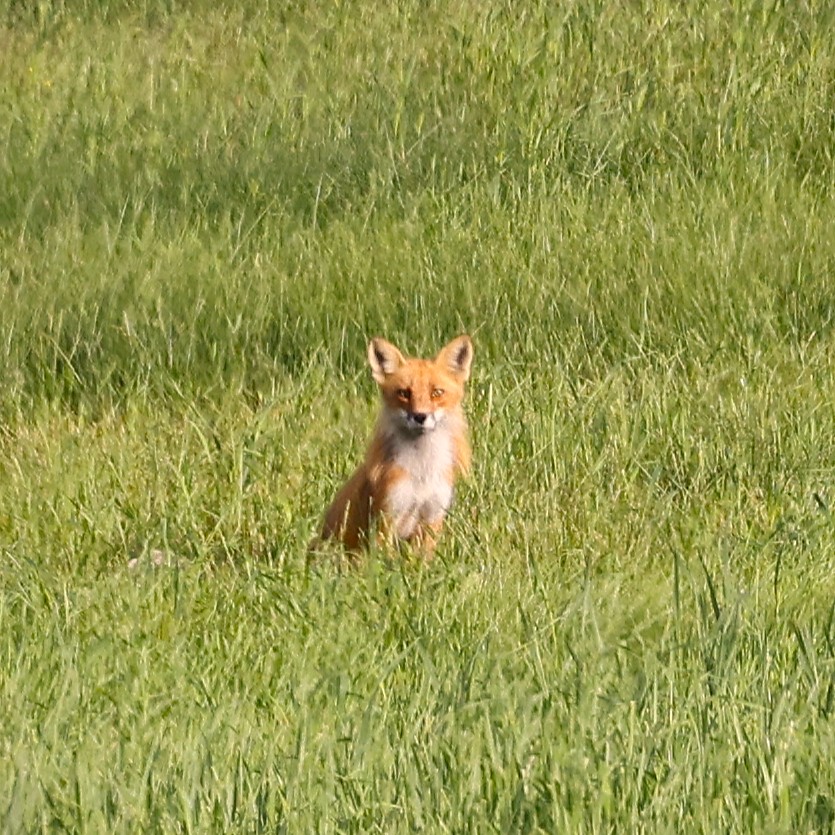
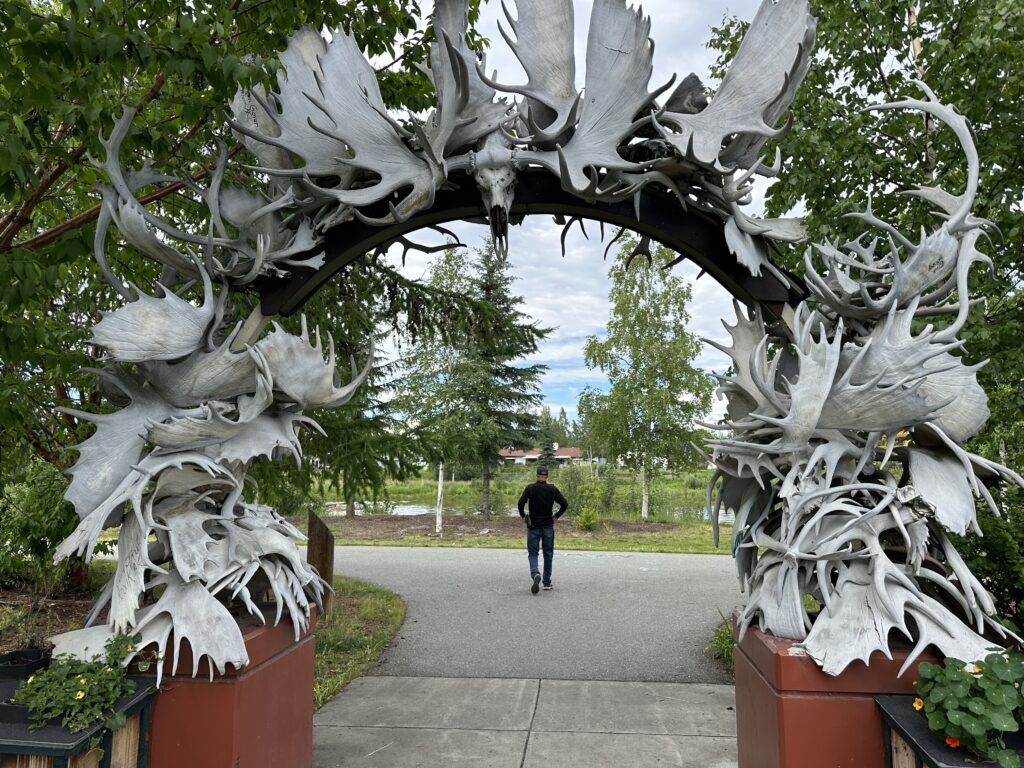
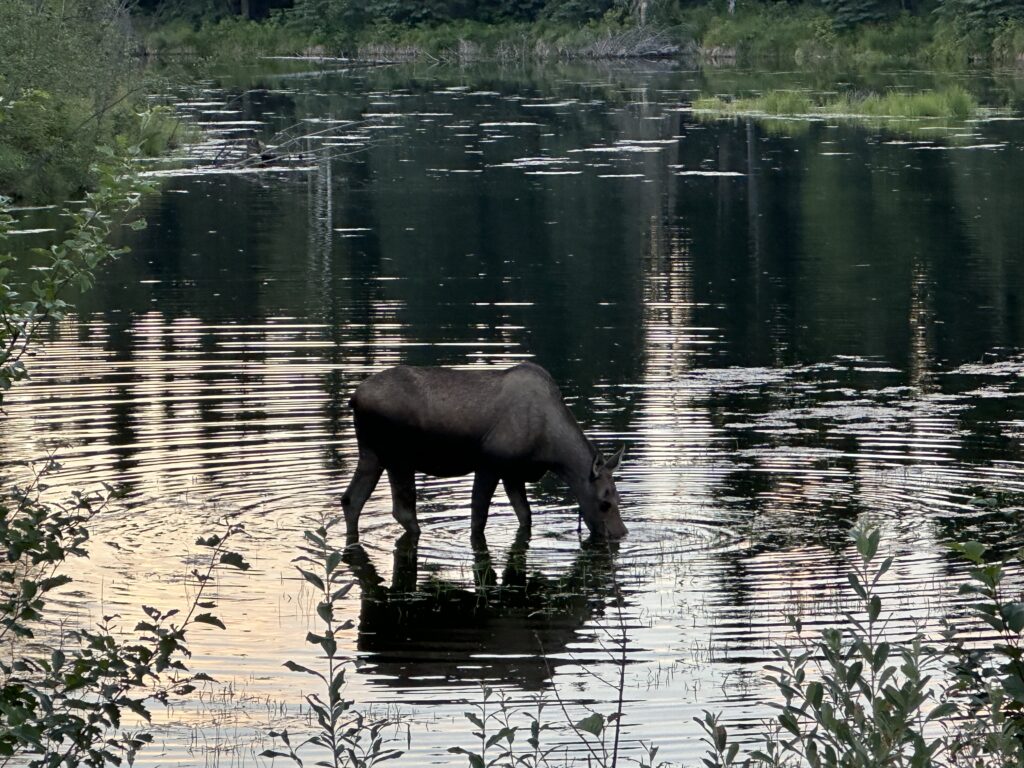
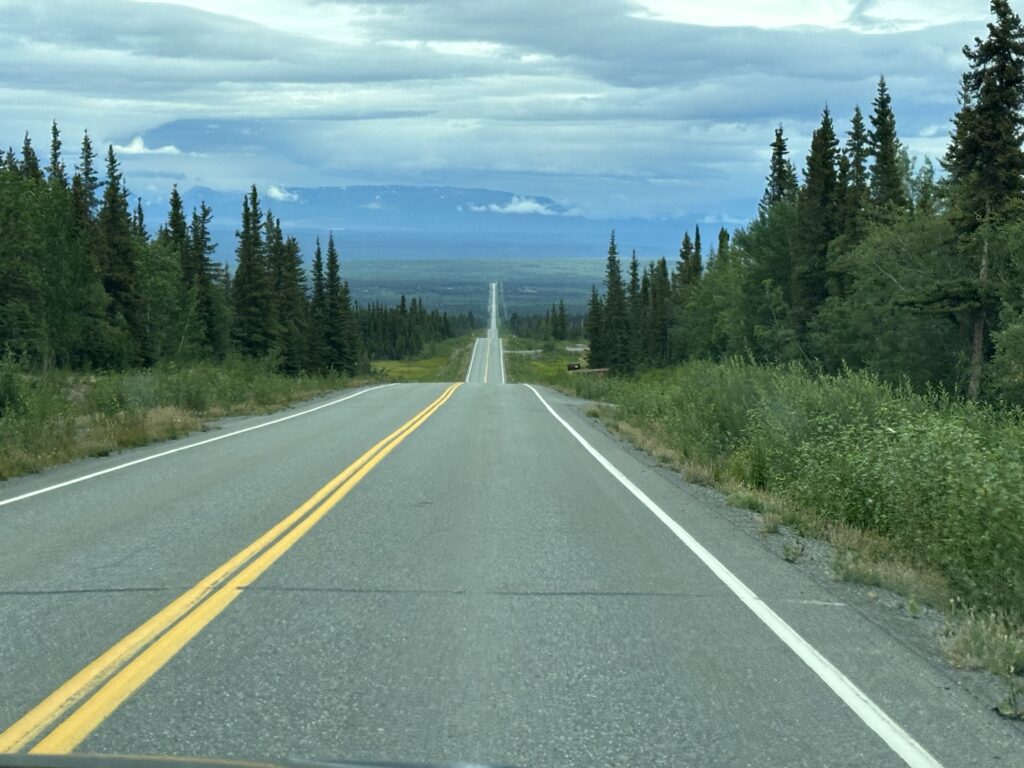
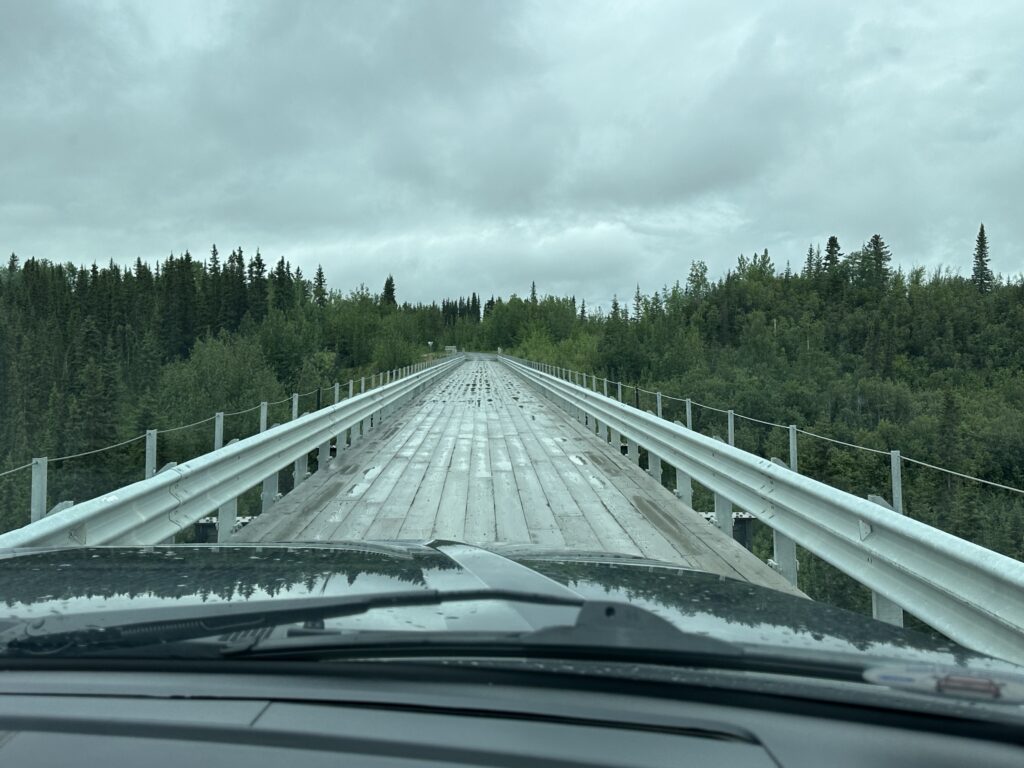
Dalton Highway
A trip up the Dalton Hwy beyond the arctic circle is worth it. We spotted American Three-toed Woodpecker, Bufflehead and American Wigeon with chicks, but no Northern Wheatears, despite reports of them. I hiked off the beaten path and up the Alaskan Pipeline right-of-way to a stream that was not frequented by out-of-state visitors and caught many arctic grayling with my fly rod for supper. Again, I was very bear aware, especially with several grayling laying on the bank.


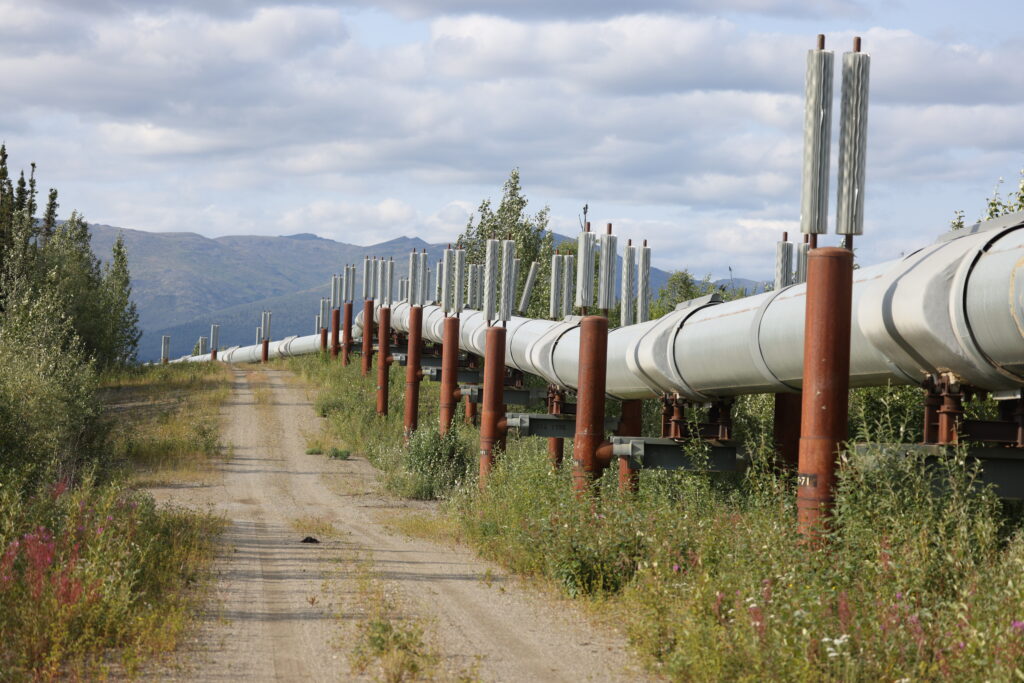
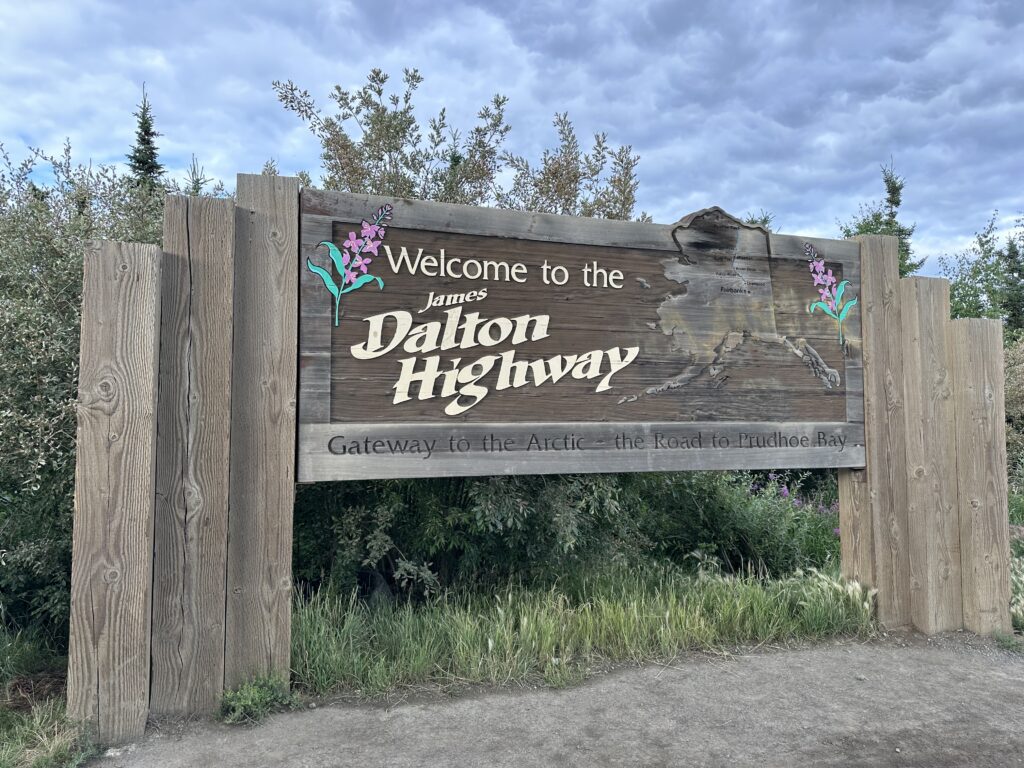
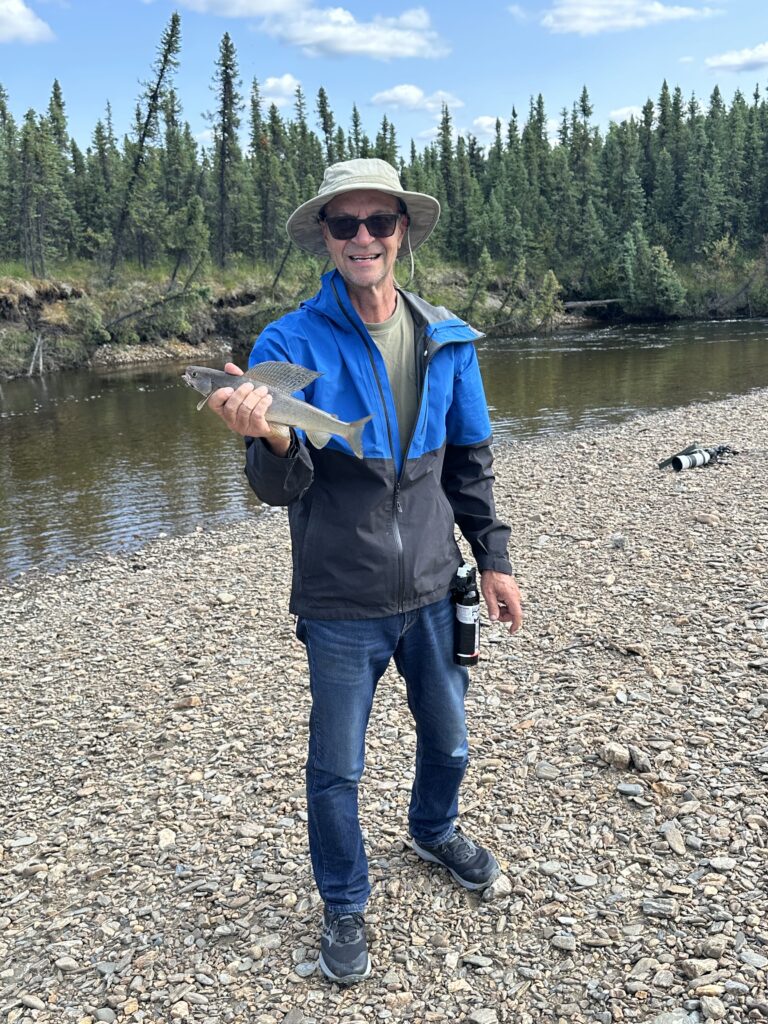

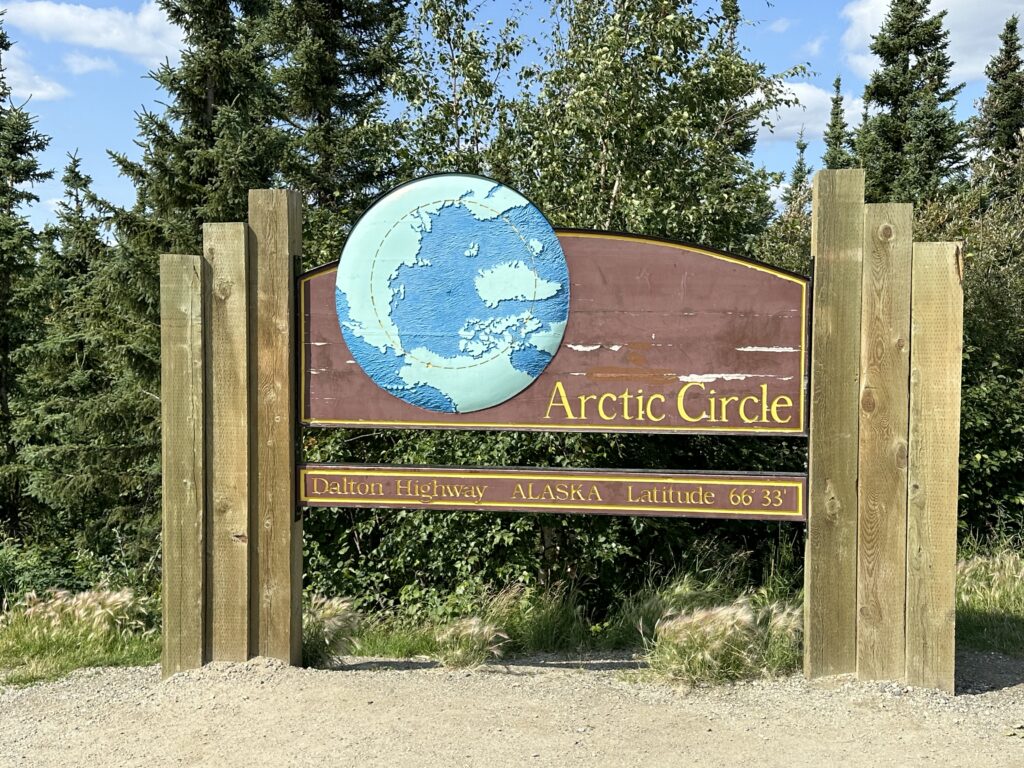
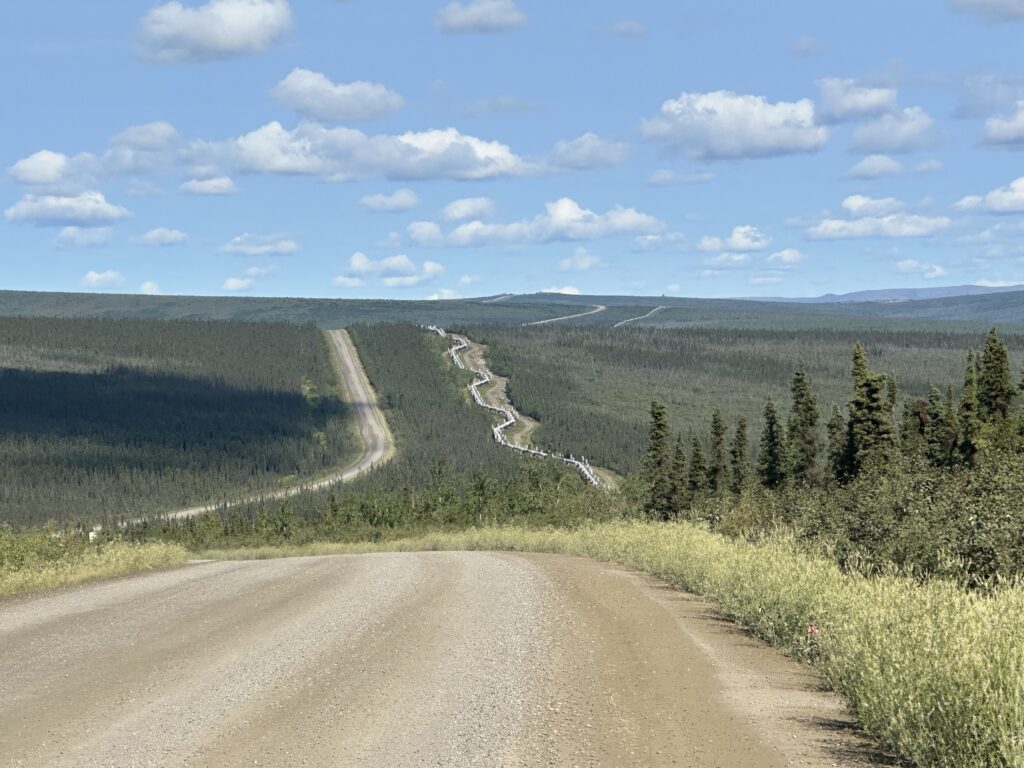
On the way back down the Dalton, don’t forget to stop and have a pizza and beer at Silver Gulch Brewery. It was my favorite. The beer and food are amazing, and the price is right.
I repeatedly called the Northern Wheatear, Northern Wheateater. Mirka corrected me constantly. Maybe the birds took this as a sign of disrespect and kept out of sight. Better luck next time!
Goodbye, Alaska
Birding Interior Alaska was over. It was sad to leave Alaska. Our final journey out of Alaska took us to the Top of the World Highway through the town of Chicken. The original settlers of this outpost wanted to name the town after the gamebirds that were so common, but they didn’t know what to call them. They looked a bit like chickens, so the name stuck. The bird was the Willow Ptarmigan which would become the State Bird of Alaska.

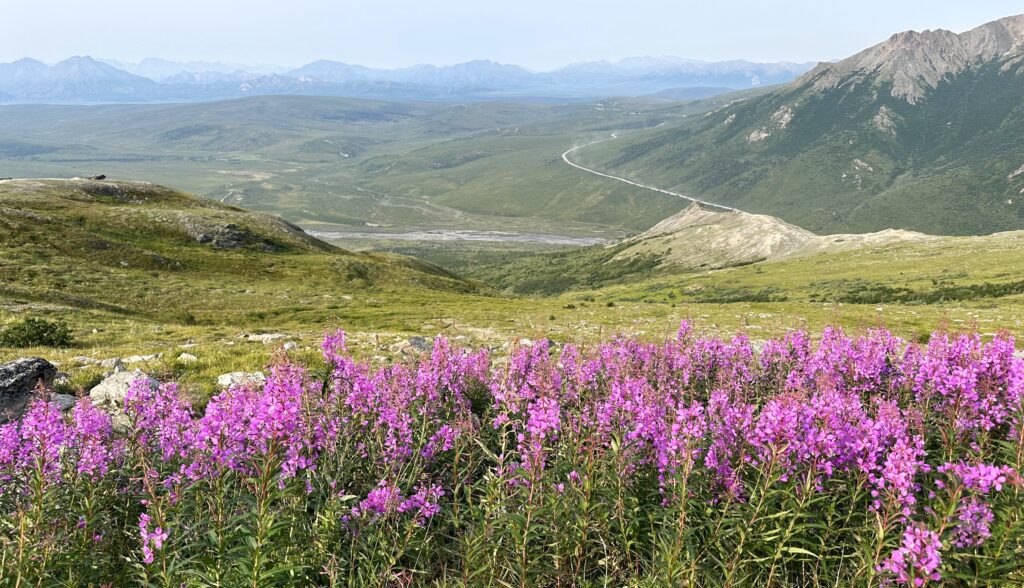
OMG, Joel and Mirka; you two have done what most nature lovers and travelers can only dream about. Do it while you can–now. Even the picture of the Alaskan Oil Pipeline brought back memories of those rugged (and rich for awhile) workers who built that incredible feat from the Prudoe Slope to Valdez. After the pipeline was finished, a bunch of them retired, some quite young, to the banana port of Golfito, Costa Rica, where my family lived from 1973 to 1982. Phyllis and I heard lots of stories about Alaska but I don’t remember any stories about birds or wildlife.
I loved all your photos but was glad to see one of my favorites way up there–the American Kestral, that I grew up with in Castalia. We called them Tilley Hawks then.
Enjoy your new adventures and keep us posted.
As always I love the blog and the pictures. What’s next?
I enjoyed every bit of it, including the unauthorized photo.